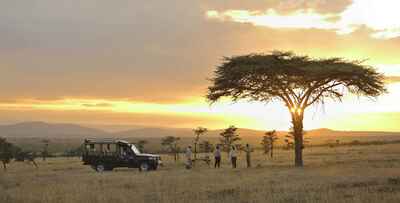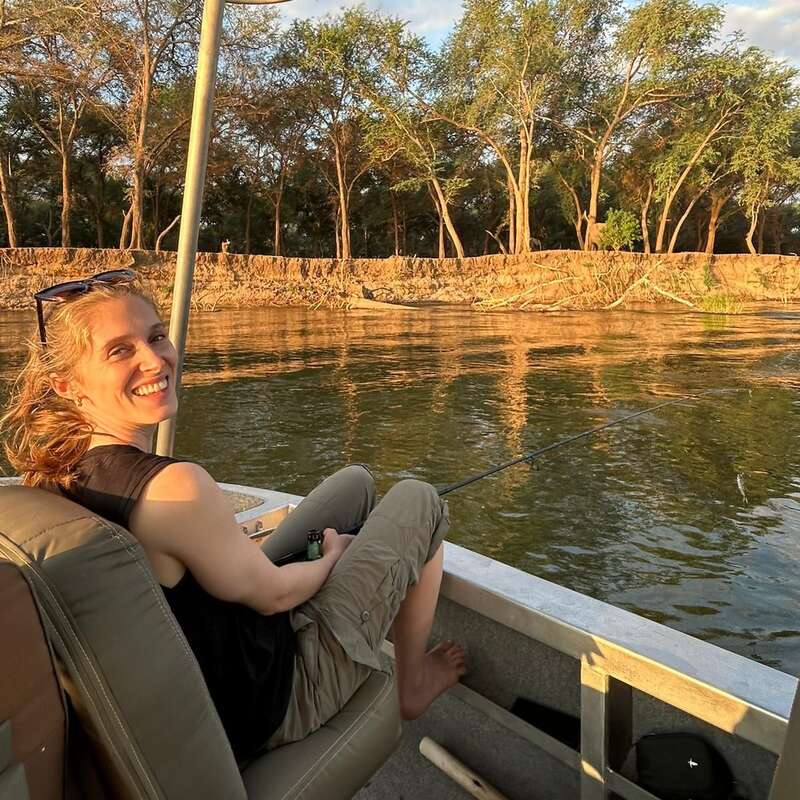About Kicheche Laikipia
With only six tents, Kicheche Laikipia is a small camp offering comfort and quality, one of a handful of ...
... properties located in the 360km² Ol Pejeta Conservancy. It’s the most luxurious option in the conservancy, with a wide range of activities, and a lovely location, with views across a small dam.
Kicheche Laikipia is very comfortable and offers space and luxury, but with a tastefully rustic edge. The welcoming managers, friendly staff and communal dining all combine to make this a sociable and relaxed camp. The end result is luxury, but with a total lack of pretension, and all of that would add up to a very fine place to stay. However, the camp's eco credentials and its very high standards of guiding make it one of the best in northern Kenya.
Our view
Kicheche Laikipia is very comfortable and offers space and luxury, but with a tastefully rustic edge. The welcoming managers, friendly staff and communal dining all combine to make this a sociable and relaxed camp. The end result is luxury, but with a total lack of pretension, and all of that would add up to a very fine place to stay. However, the camp's eco credentials and its very high standards of guiding make it one of the best in northern Kenya.
Accommodation
6 tents, incl. 1 family tent
Children
Fine for 12+
Open
Typically shuts for a month around May
Activities

4WD Safari

Birdwatching

Canoeing

Guided walking safari

Mountain biking

Night drive

Private activities
Traveller reviews of Kicheche Laikipia
87 real, un-edited reviews from Expert Africa's travellers.
Arrived 19 Feb 2025, 4 nights
"Kicheche Laikipia review"
Overall rating: Excellent
Arrived 1 Feb 2025, 3 nights
"Kicheche Laikipia review"
Overall rating: Excellent
Arrived 28 Jan 2025, 4 nights
"Kicheche Laikipia review"
Overall rating: Good
Arrived 26 Jan 2025, 3 nights
"Kicheche Laikipia review"
Overall rating: Excellent
Arrived 29 Jan 2025, 4 nights
"Kicheche Laikipia review"
Overall rating: Excellent
Arrived 17 Jan 2025, 2 nights
"Kicheche Laikipia review"
Overall rating: Excellent
Arrived 17 Jan 2025, 2 nights
"Kicheche Laikipia review"
Overall rating: Excellent
Arrived 17 Jan 2025, 2 nights
"Kicheche Laikipia review"
Overall rating: Excellent
Arrived 17 Jan 2025, 2 nights
"Kicheche Laikipia review"
Overall rating: Excellent
Arrived 15 Nov 2024, 3 nights
"Kicheche Laikipia review"
Overall rating: Excellent
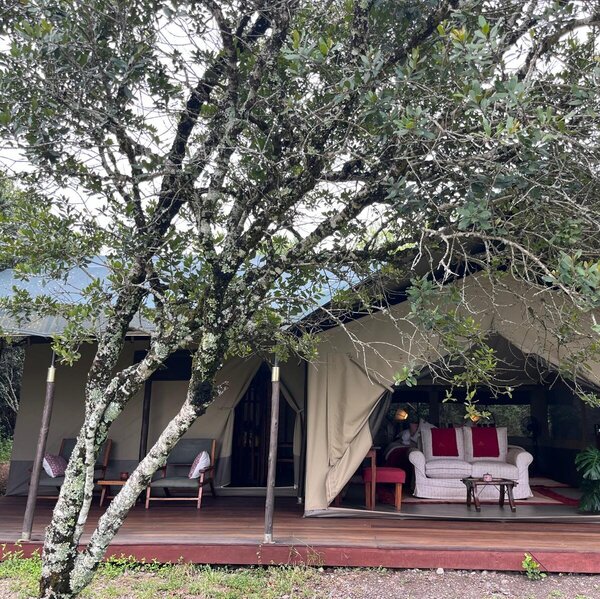
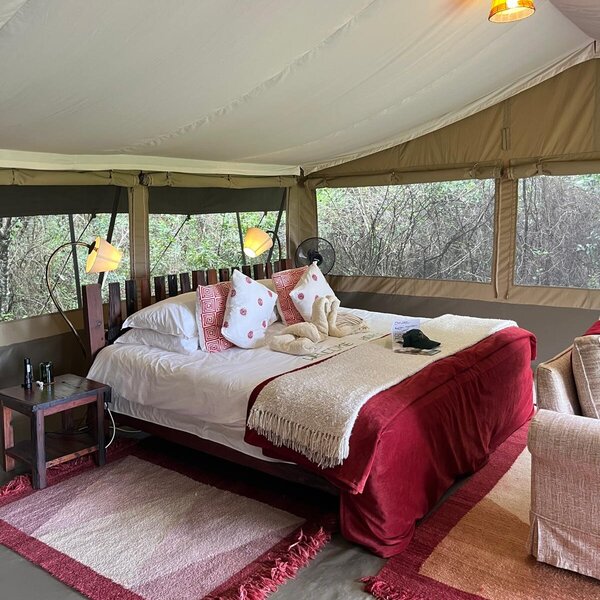
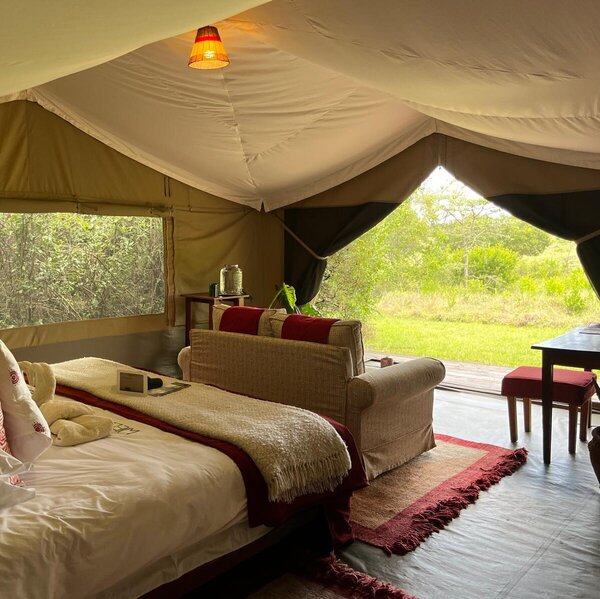
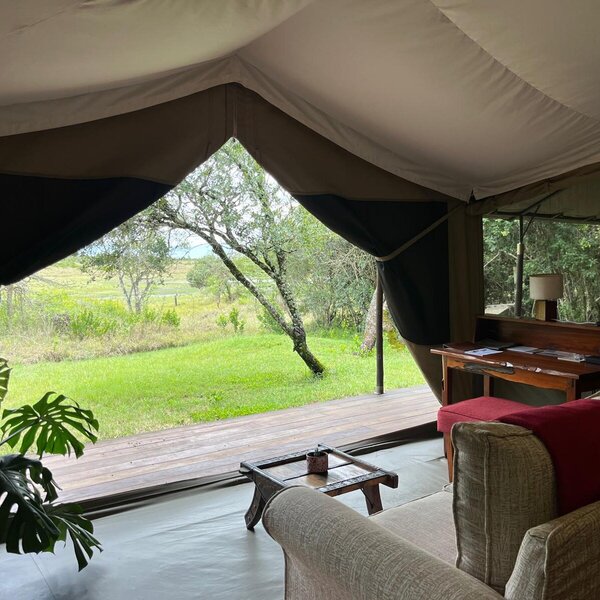
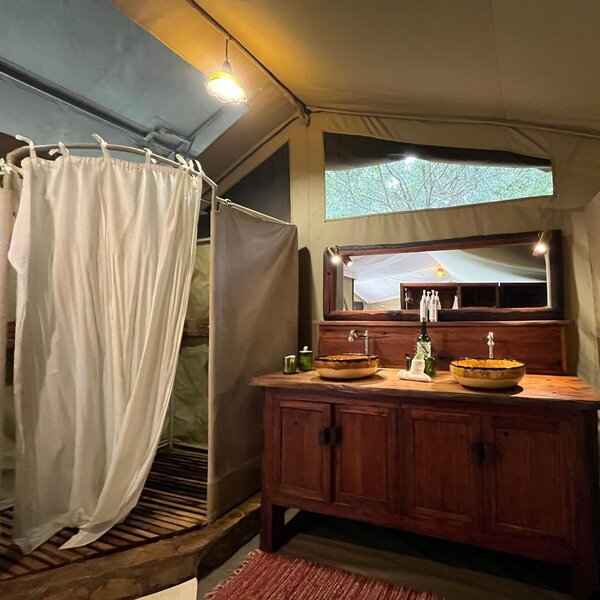
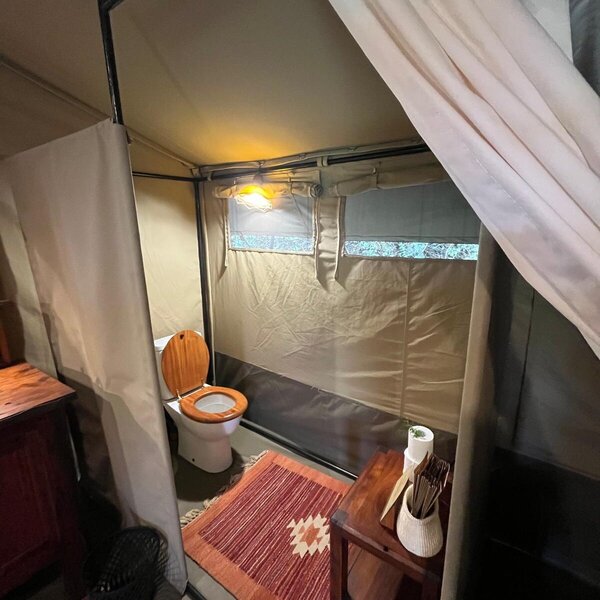
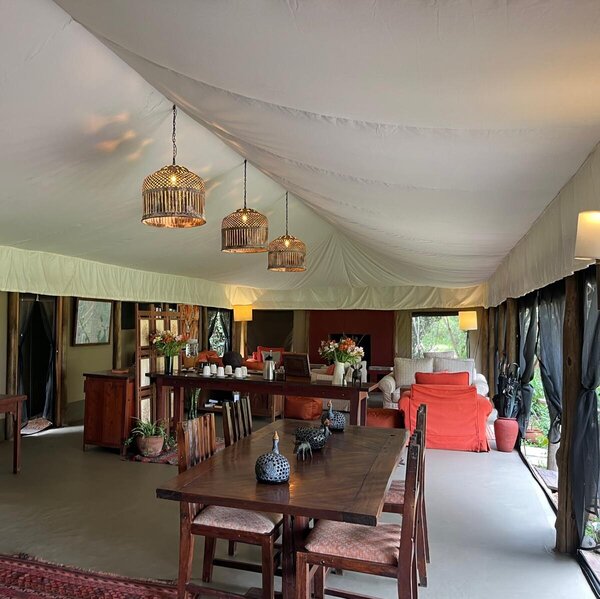
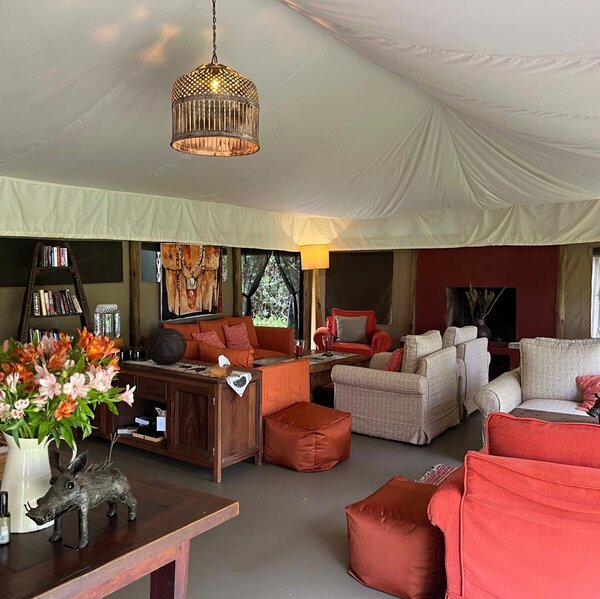
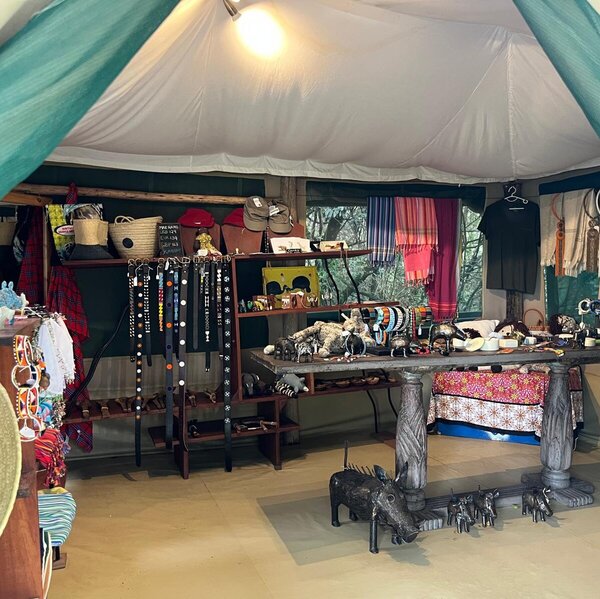
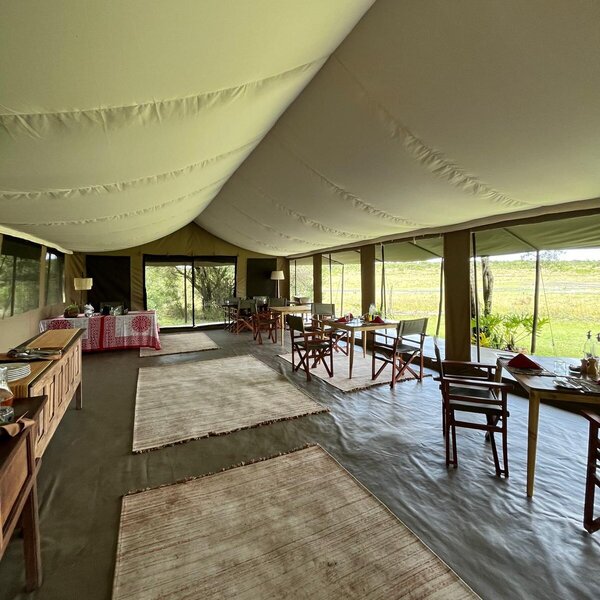
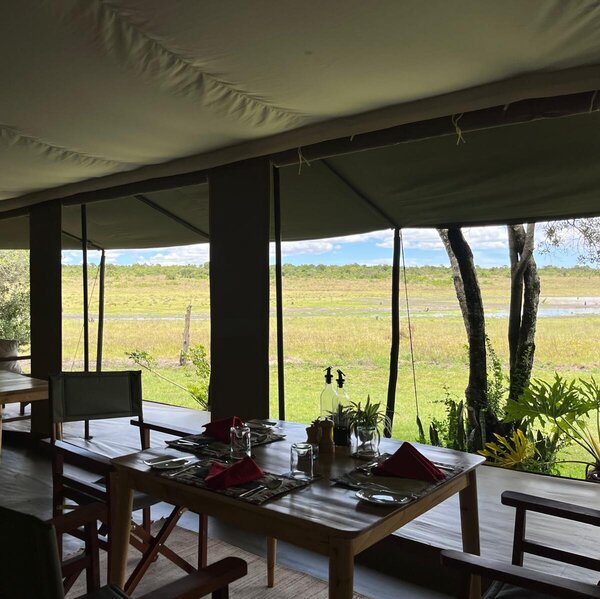
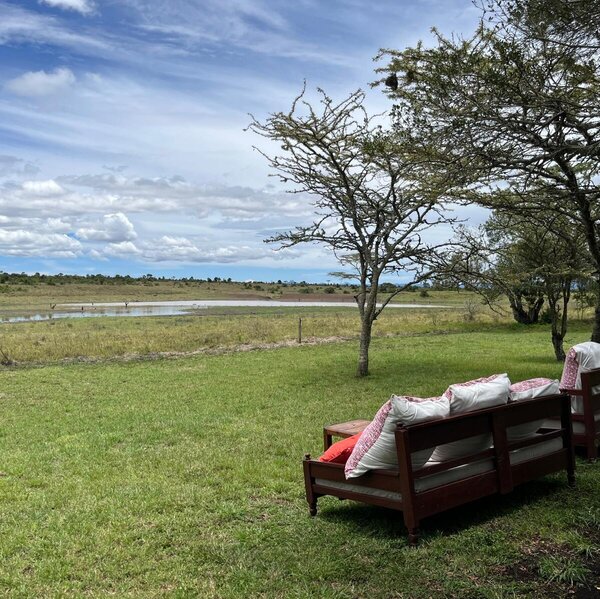
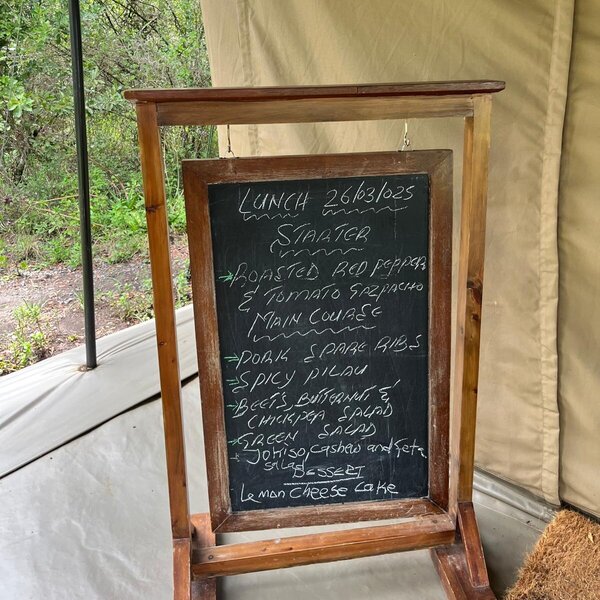
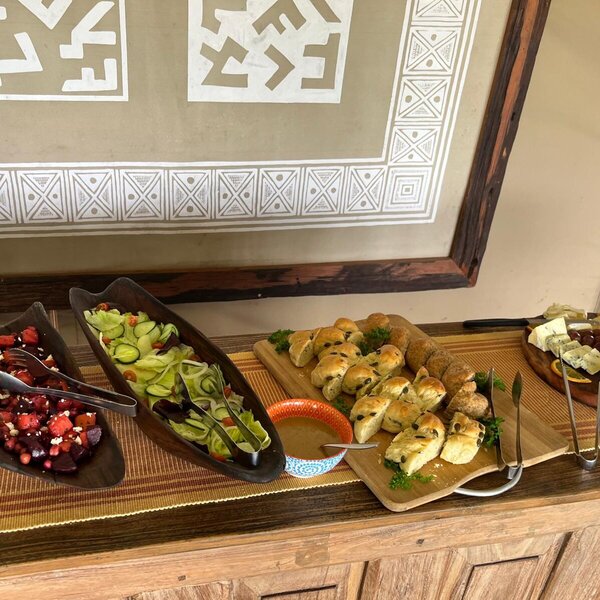
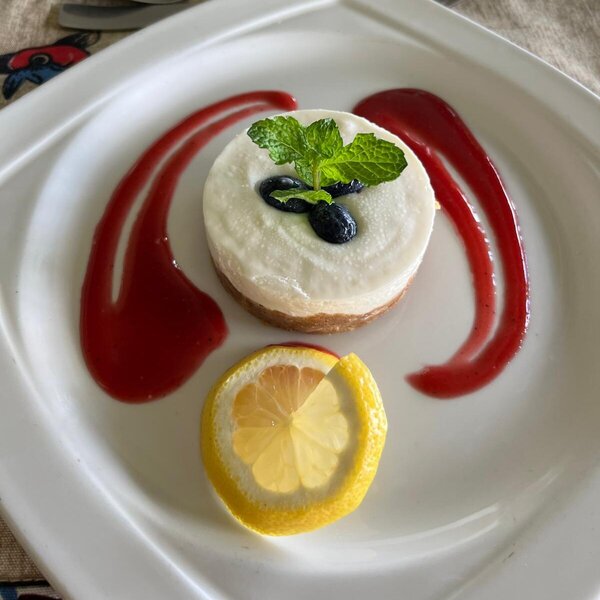
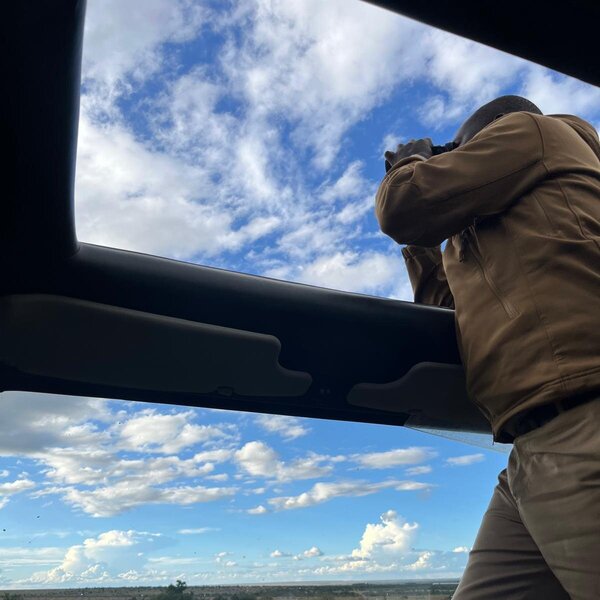
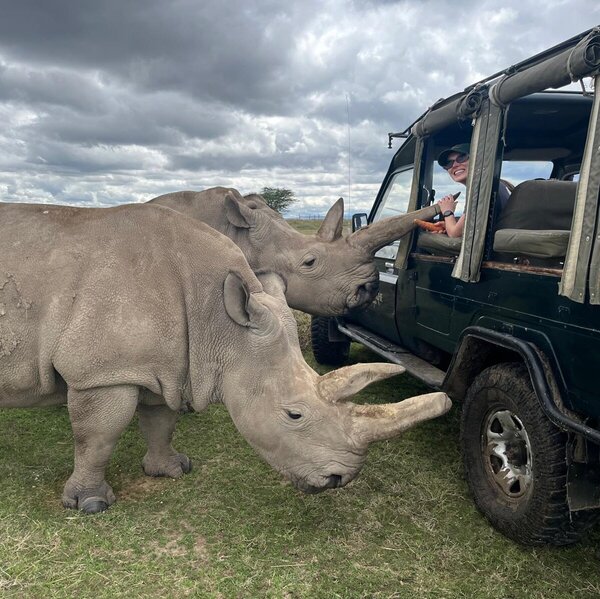
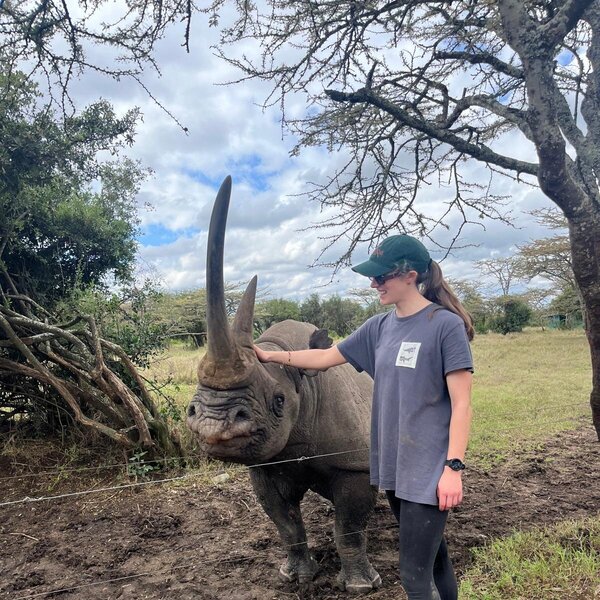
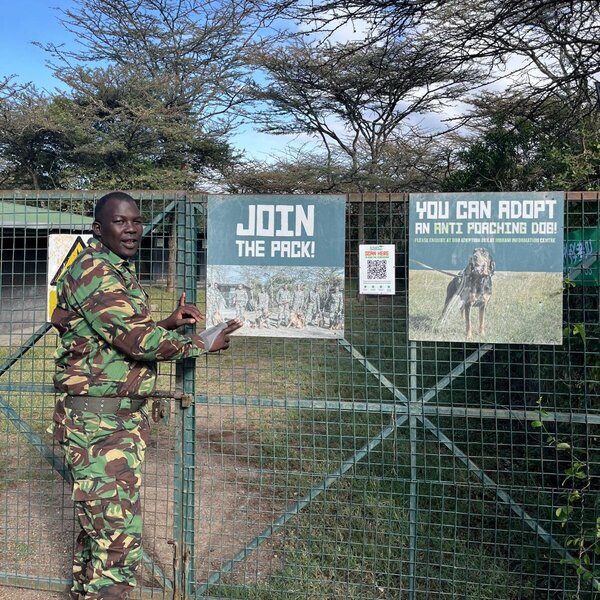
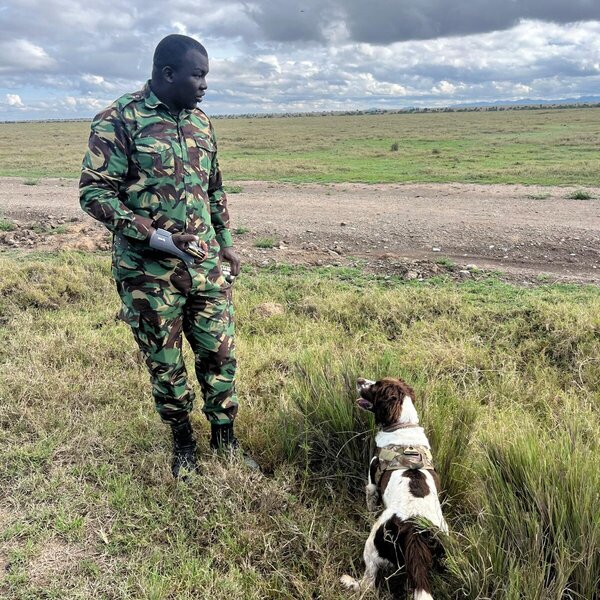
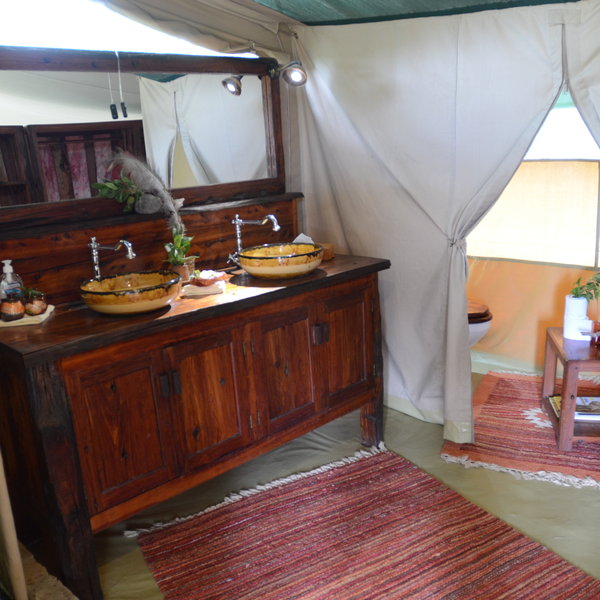
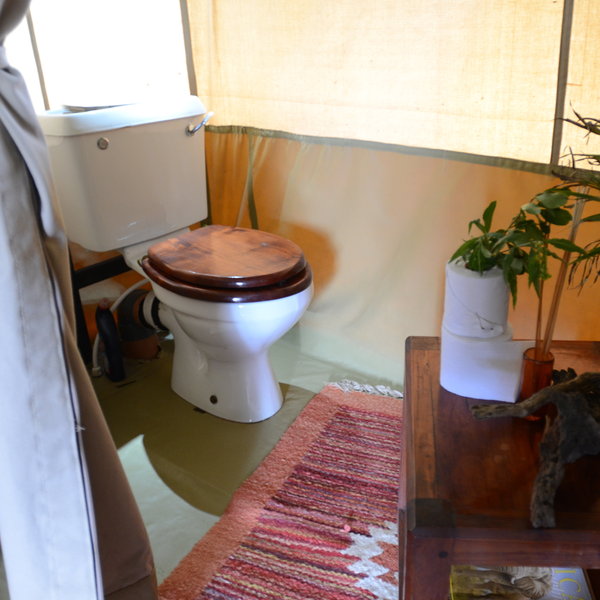
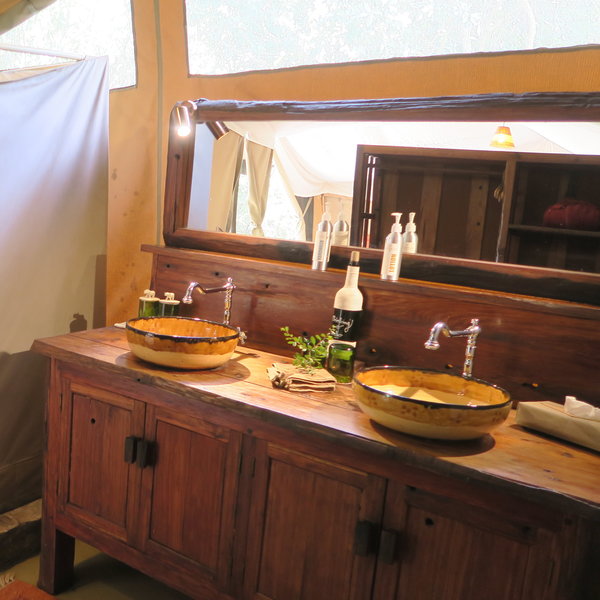
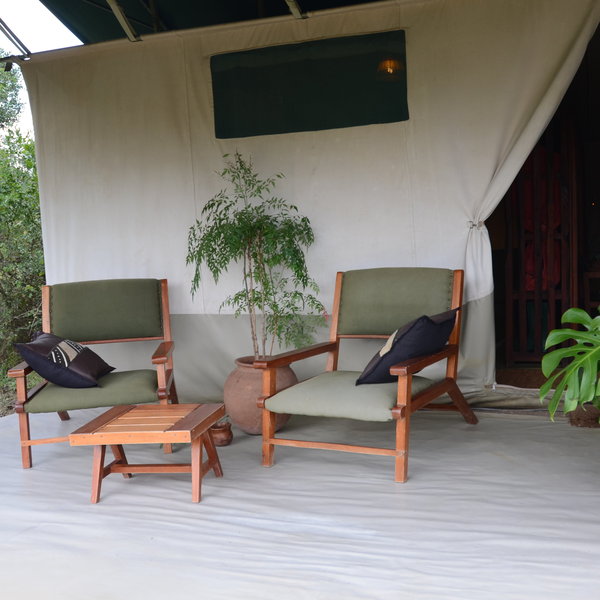
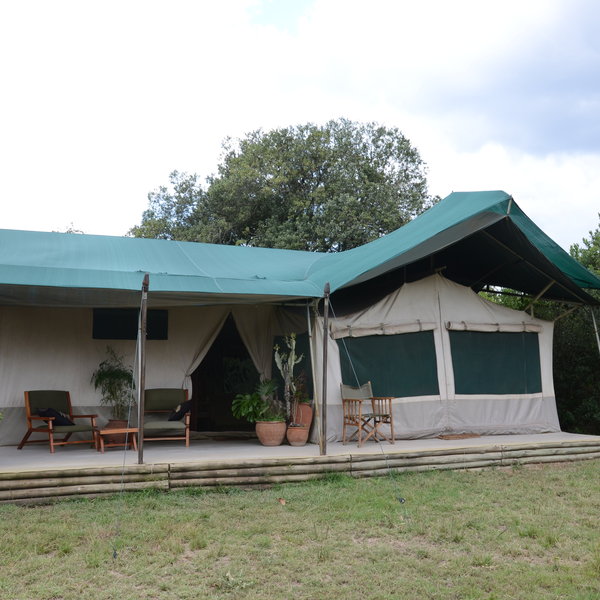
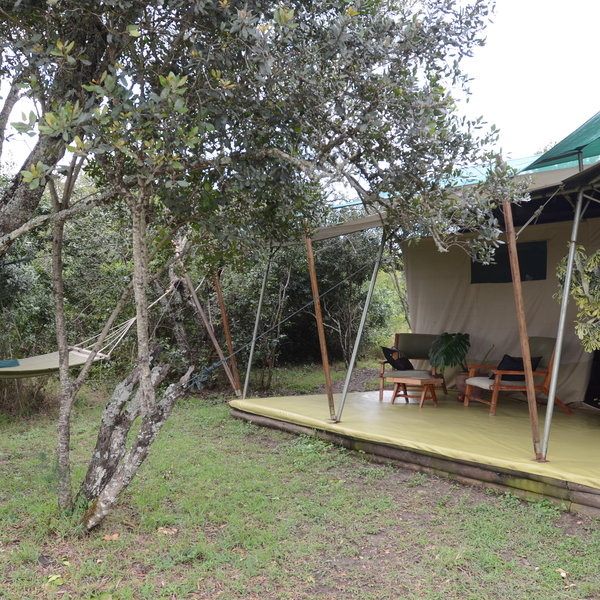
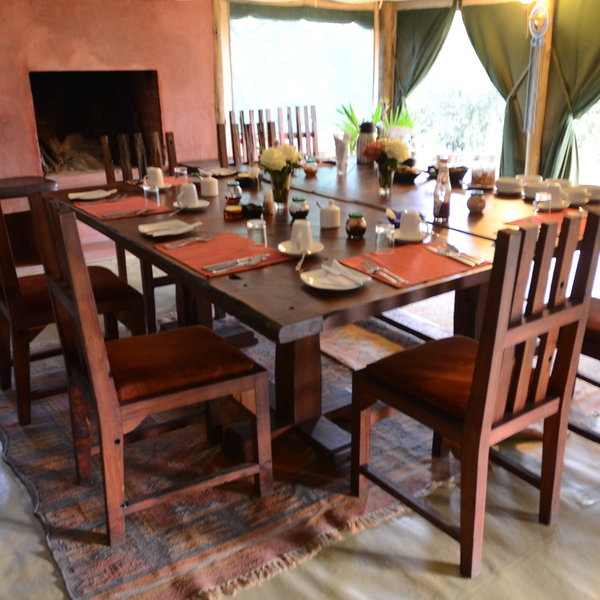
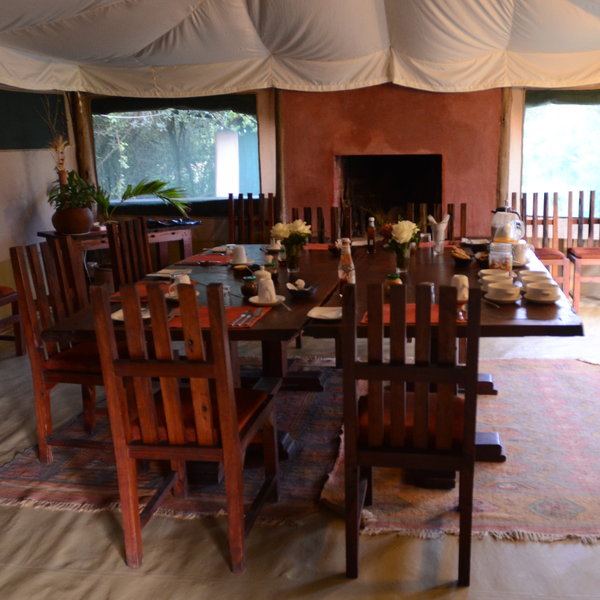
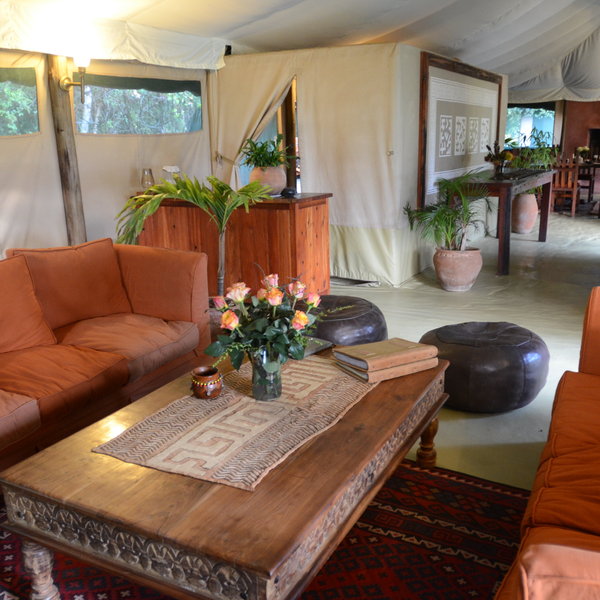
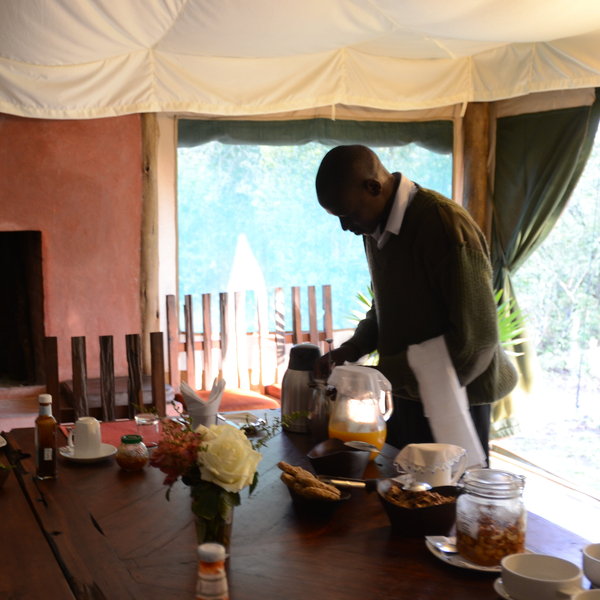
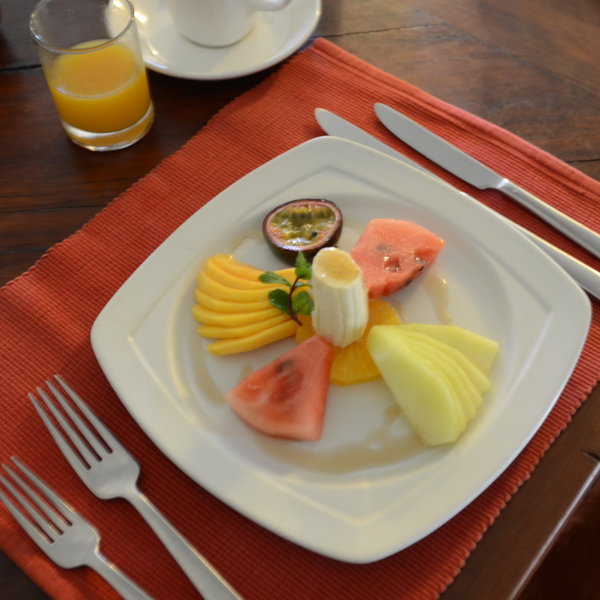
Expert Africa's gallery
When we travel we take lots of photos ourselves to give you a real and un-edited view of the safaris. See our 44 pictures and 1 videos of Kicheche Laikipia to get the candid view.
View gallerySafaris visiting Kicheche Laikipia
Just ideas, we'll always tailor-make a trip for you
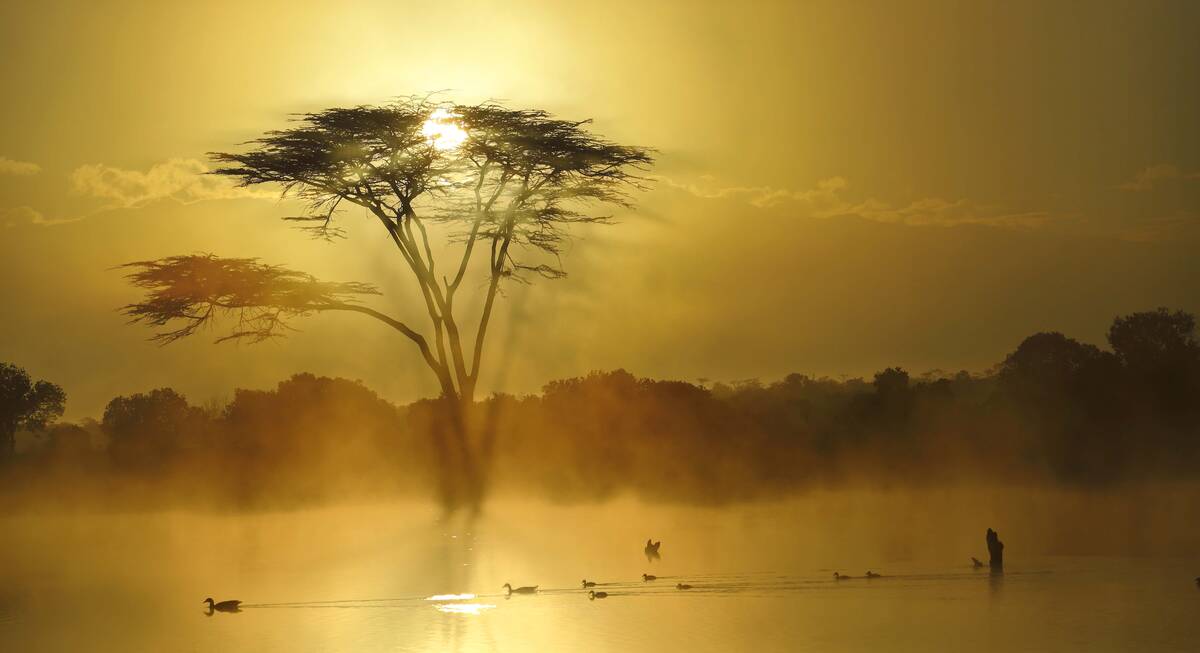
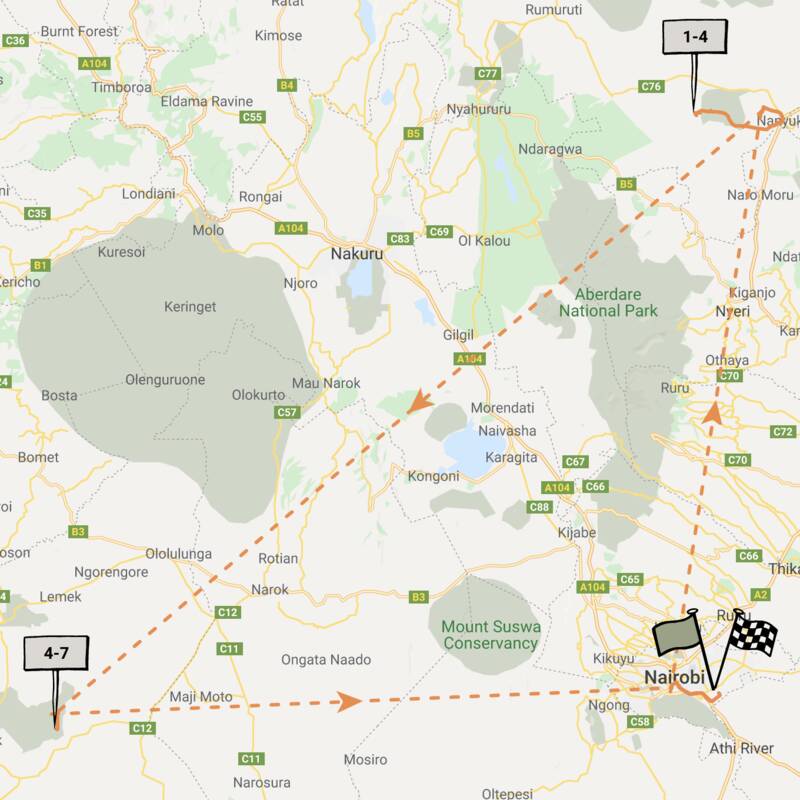
Purple Grenadier Fly-In Safari
6 days • 2 locations • 1 country
NAIROBI AIRPORT TO NAIROBI AIRPORT
Fantastic guiding from intimate, well-run mid-range tented camps, in superb conservancy locations: this safari is all about making the most of the incredible wildlife in Laikipia and the Maasai Mara.
Visiting Laikipia, Mara Conservancies
US$6,390 - US$8,800 per person
Kicheche Laikipia: Our full report
With only six tents, Kicheche Laikipia is a small camp offering comfort and quality, one of a handful of ...
... properties located in the 360km² Ol Pejeta Conservancy. It’s the most luxurious option in the conservancy, with a wide range of activities, and a lovely location, with views across a small dam.
Facing the dam, and tucked beneath some shady trees, is Kicheche's spacious main mess tent. The dining area, with a large wooden table, is where breakfast is served, and dinner, too, on cooler nights. Like the rest of the wooden furniture in the camp, the table is beautifully made from cedar wood, which comes from fence posts reclaimed from the conservancy. It is set beside a brick fireplace which makes for a delightfully cosy ambience during dinner on chilly evenings. On warmer days the front of the tent is opened up completely for views of the dam.
The adjoining lounge area is furnished with sofas and armchairs, poufs, and rugs, enhanced by pot plants and vases of locally grown roses. The result is really homely, and this, together with an immensely welcoming team makes the general atmosphere very warm and relaxed.
In a separate tent nearby is a small shop which sells a few locally made items and more sophisticated curios from Nairobi such as belts, bags, and silver jewellery.
- The six tented rooms at Kicheche Laikipia – all named after 19th century Maasai laibon or chiefs – are broadly the same in style, though one is a larger family tent with a double and two single beds. All the tents are raised slightly on solid plinths and are very spacious, with pale cream canvas walls and floors dotted with Persian rugs. Inside, each tent is partially divided by a wood-and-fabric hanging space for clothes. To one side is the bedroom with heavy wooden beds (also made from reclaimed fence posts from the ranch), white linens, and heavy red throws for chilly mornings and evenings, and bright cushions. A sofa and writing desk lie at the foot of the bed, facing the out to the view in front of each tent - perfect for lounging on during siesta time. We especially love how much drinking water is provided at Kicheche camps. Each room is equipped with a large glass barrel from which you can help yourself throughout your stay.
- On the other side of the partition is the bathroom, with a shower, lovely ceramic twin wash basins set on a large wooden vanity cabinet, and a flush toilet behind a separate canvas flap. Water, heated by a solar water heater, is available for use throughout the day and night, although you might need to wait a couple of minutes to allow for the water to warm up as it runs. Shampoo, soap, and shower gel are provided, as is washing powder for ladies to do their own underwear.
- The family tent is larger with two bedroom areas separated by a partition. On one side is a double bed and on the other are twin beds. Both rooms share one bathroom, which is the same as in the other tents.
- Little touches such as wellington boots, umbrellas, insect spray, slippers and a bathrobe, and a yoga mat added to the level of comfort, whilst a bird checklist and maps and information on Ol Pejeta conservancy are provided on the writing desks – we liked the tents here a lot.
- Each tent has a veranda and a hammock at the front with comfy chairs and stylish African-fabric cushions that looks out towards the waterhole. During our stay, a few resident waterbuck seemed permanently positioned in front of our tents, totally uninhibited by our presence, whilst birds and grass mice would move on the lawn.
Kicheche Laikipia Camp has a Gold Level Eco-rating Certificate from Ecotourism Kenya, making it one of only a dozen camps and lodges in the whole country to have achieved this endorsement of its responsible resource use, conservation of the environment and investment in the local community.
In common with all the Kicheche camps (the others are Kicheche Mara Camp, Kicheche Bush Camp and Kicheche Valley Camp) the guides at Kicheche Laikipia all have at least a silver guiding qualification. The activities and wildlife here are really varied: you can do morning, afternoon, or full-day game drives and you can also opt to do a night drive when, if you're lucky, you may see porcupines, civets, zorilla (African polecats) or bushbabies.
For game drives, we found the Kicheche Laikipia vehicles to be some of the best we have used. They now have an all open-sided vehicle fleet with retractable roofs (that can be put back in place in case of rain), and they act as admirable mobile photo hides that are always well positioned by the driver-guides. Bean bags are always available for steadying your camera.
It's also possible to do a walking safari with an armed guide, either in the morning or the afternoon. This normally involves driving out of camp and then walking, as the bush is too thick to walk from camp. A popular option is to do this in the morning when you have a good chance of seeing the more elusive black rhinos for which the Ol Pejeta Conservancy is famous, as well as the much less skittish white rhinos which are happy to graze on the open plains.
Subject to the water level, you can also canoe on the dam lake in front of camp, or set out for a cycle ride one of the camp's mountain bikes. For a bike ride, guests are first driven to the southern part of the conservancy which is regarded by Kicheche Laikipia as being free of dangerous wildlife. Note, however, that Expert Africa does not recommend doing activities that take place outside of a vehicle without an armed escort.
Kicheche Laikipia has recently introduced fly-camping, at extra cost, which is led by an experienced walking guide. Setting off in the afternoon, you drive to the neighbouring conservancy of Loldaiga before walking a couple of hours to the fly-camp. After dinner you bed down for the night in small dome tents surrounded by the sounds of the African bush. The following morning you can either embark on a longer 13km walk back to the main camp or take a vehicle and go on a slow game drive.
Full-day visits to the Ngare Ndare forest, in the northern foothills of Mount Kenya, are also possible at extra cost. As well as walking in this indigenous, highland forest, you can visit the tree-level canopy walk for a bird's eye view and go swimming in the waterfalls. It's worth noting that it takes around 1hr 45 - 2hr to drive to Ngare Ndare forest, and the same back, but for those who would like to be active in a verdant ecosystem, we think this makes for a great activity.
Another popular activity is to visit the anti-poaching dog unit (extra cost) which is incredibly interactive and fun. These are working dogs, so it's best to talk to the camp manager upon arrival to confirm availability and arrange a visit - and be sure to wear clothes you don't mind getting muddy. The bloodhounds are friendly and won't be shy about jumping up to give you a lick (as these are big, heavy dogs, it's worth noting this activity is best suited to those comfortable with being jostled a bit by large, friendly dogs).
For many people, an absolute must at Ol Pejeta Conservancy is a visit to the Northern White Rhino Sanctuary, which is home to the last two remaining females. This needs to be booked in advance and costs US$60 per person. Guests will greet a keeper and pass Baracka (the resident blind black rhino) en route to the white rhino enclosure. It's very likely that the keeper will call Baracka over to the fence line for you to give him a rub and a scratch and take a photo, too. Guests are then driven into the enclosure with the ladies, Fatu and Najin, where a ranger feeds the rhinos and talks to you about the sanctuary's progress in attempting to breed this magnificent and critically rare subspecies. Whilst it is believed that only two females remain, scientists are attempting to use IVF technology with existing biological samples to create an embryo which will then be carried by a surrogate southern white rhino female.
Ol Pejeta also has a chimpanzee refuge, which you can visit free of charge. Some visitors may enjoy this experience, though it is not for everyone. The 1km² sanctuary provides a semi-wild fenced environment for chimps from the Jane Goodall Institute in Burundi, and confiscated pets and bushmeat-trade orphans from other parts of Africa, which cannot be reintroduced into the wild. Chimpanzees are not native to Kenya, and as a welfare home (females receive contraceptive medication) the sanctuary does not serve any conservation purpose, however, it does focus visitors' attention on the perilous status of wild chimpanzees. On a free visit, you view the chimps from behind the fence of their enclosure. You can also visit behind the scenes (extra cost) to see them being fed, chat to the rangers, and learn about individual chimps and their histories.
Activities
4WD Safari
Birdwatching
Canoeing
Guided walking safari
Mountain biking
Night drive
Private activities
Families & children
- Attitude towards children
- Kicheche Laikipia accepts children but considers that children over the age of six years are better suited to the camp.
- Property’s age restrictions
- None
- Special activities & services
- Kicheche Laikipia has a family tent, and can provide a night guard outside the tent for children who go to bed early. The camp can offer children's meals in the tents at an earlier time. They don't offer childminding but do have board games. They also have guided daytime activities for children, including: tracking animal footprints around camp and identifying bones; catching, releasing, and identifying butterflies and other insects; making bows and arrows and learning how to throw a spear.
- Equipment
- None
- Generally recommended for children
- Though the camp is fenced it is in a wild location with a lot of dangerous game. We would recommend Kicheche Laikipia only for older children and teenagers who can be trusted to behave appropriately in an area like this.
- Notes
- Children are their parents’ responsibility at all times.
Food & drink
- Usual board basis
- Full Board & Activities
- Food quality
- We have stayed at Kicheche Laikipia on numerous occasions over the years, and always found the food to be very good. There is an abundance of nearby farms producing fresh produce and there is no lack of tasty salads and vegetables. The camp has its own vegetable and herb garden, and lamb and beef comes straight from the livestock on the mixed-use Ol Pejeta Conservancy itself. All the Kicheche camps do things differently, so if you are staying in more than one, you won't find yourself eating the same menu twice. Kicheche Laikipia is particularly flexible to guests' requirements and preferences.
Breakfast is often taken out of camp as a picnic, and usually consists of fresh fruit, bread, sausages, bacon and eggs all pre-prepared at the camp. Hot tea and coffee is on offer as are juices. In camp, breakfast is a selection of fruit, cereals and a cooked breakfast to order.
Weather permitting, lunch is served al fresco. It is often taken out as a picnic, but on our recent visit we had lunch in camp which was set up overlooking the dam. We had gnocchi and herby tomato sauce to start, followed by vegetable quiche and a selection of fresh salads, cheeses and breads. Desert was a pineapple crumble.
Tea is served before the afternoon activity with the option of coffee, tea or herbal tea – and homemade cake.
Dinner is three courses, usually served in the dining room beside the fire. On our most recent visit we started with pumpkin and orange soup, then an East African buffet which consisted of a medley of curries, rice, dahl and traditional Kenyan dishes. We rounded up the meal with a rich white chocolate mousse. On a previous stay we’ve enjoyed a Mongolian barbecue, which was really fun and interactive. - Dining style
- Mixture of group dining and individual tables
- Dining locations
- Indoor and Outdoor Dining
- Further dining info, including room service
- Kicheche Laikipia can offer dining in tents on request, but this has to be arranged in advance. The radios in the room are for emergencies as opposed to room service.
- Drinks included
- All available drinks are included in the price, including house wines, beers, and spirits. Many of the wine bottles are recycled into the drinking glasses used at camp, and there is a beautiful bathroom made from recycled wine bottles at the back of house.
Our travellers’ wildlife sightings from Kicheche Laikipia
Since mid-2018, many of our travellers who stayed at Kicheche Laikipia have kindly recorded their wildlife sightings and shared them with us. The results are below. Click an animal to see more, and here to see more on our methodology.

100% success

100% success

100% success

100% success

100% success

100% success

100% success

98% success

87% success

61% success

26% success

17% success

17% success

14% success

2% success

0% success
Getting there
- Location
- Laikipia, Kenya
- Ideal length of stay
- Two to three nights at least to explore the conservancy properly. If you want to try the full range of activities, it would be easy to stay here for four nights.
- Directions
- Visitors to Kicheche Laikipia fly from Wilson Airport in Nairobi to Nanyuki Kamok, taking from 40 minutes direct to a couple of hours if you fly via Samburu. It is then 15-20 minute direct transfer to camp, but you'll often pause to watch wildlife.
- Accessible by
- Fly-and-Transfer
Special interests
- Solo safaris
- See ideas for Solo safaris in Kenya
- Walking safaris
- Kicheche Laikipia’s guides are all at least silver-qualified. Their insights into local flora and fauna contribute hugely to the walking experience, while opportunities to explore the conservancy on foot provide sightings of black and white rhinos.
- See ideas for Walking safaris in Kenya
Sustainability
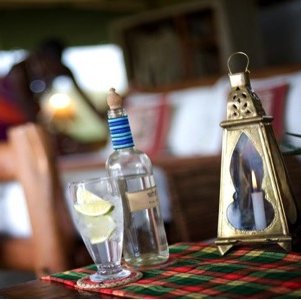
Kicheche:The game-changer of community development
Comprising of six luxurious tents, Kicheche Laikipia Camp is located in Ol Pejeta Conservancy, home to Kenya’s largest population of Black Rhino. The application of responsible tourism practices to support community development through education has put Kicheche Laikipia Camp on the map as one of the best tourism facilities in Kenya.
Education initiatives engage locals and tourists alike. The camp has an in-house staff training program whereby employees are trained on issues such as conservation and health and safety. Chefs receive refresher training at Kenya Utalii College, whereas the camp guides are certified under the Kenya Professional Safari Guides Association. Each year the camp sponsors students at the Koiyaki guiding school, and currently employs several graduates as guides.
Kicheche Laikipia also implements educational initiatives through Kicheche Community Trust. Proceeds from the camp through the Trust are used to support schools, providing bursaries for children in need or those affected by HIV/AIDS. Kicheche Laikipia Camp is especially involved in supporting Nanyuki Children’s home, engaging in self-empowerment project (i.e. farming layers hens) and increasing awareness about urgent needs such as bursaries to pay for school fees & uniforms.
Guests are also encouraged to get involved in providing quality education for the local community through the worldwide ‘Pack for a Purpose’ initiative, which asks tourists to donate items that may be of need in their areas of travel. To this extent, Kicheche Laikipia actively promotes the ‘Go buy a book’ programme, asking tourists to pack a book and donate it to a local youth center.
Consistent efforts towards local community development have brought the camp the Gold level Eco-rating Certification by Ecotourism Kenya for their outstanding and replicable best practices.
See more great sustainability projects in Kenya
Communications
- Power supply notes
- There is a backup 5KVA generator. There are plugs for charging batteries in all of the tents 24/7. The tents have plenty of well positioned lighting.
- Communications
- Kicheche Laikipia has WiFi in the guest rooms but not in the communal area; there is intermittent cellphone coverage.
- TV & radio
- None
- Water supply
- Borehole
- Water supply notes
- There is a pipeline from the the Ol Pejeta Conservancy borehole to two 5000-litre water tanks. They also harvest rain water. Large, 20-litre water barrels are split into game-drive water flasks and clay urns in the tents that keep the water cool.
Health & safety
- Malarial protection recommended
- Yes
- Medical care
- There is first-aid equipment in camp and also in the vehicles, and guides are all trained in basic first-aid and do yearly refreshers. Nanyuki Cottage Hospital is an hour's drive away.
For emergencies, Kicheche Laikipia has contact with flying doctors; the nearest airstrip, Kamok, for charter flights and emergencies only, is ten minutes' drive away. - Dangerous animals
- High Risk
- Security measures
- There is a central safe in camp and there are green storage bags in the tents for valuables. Askaris escort guests around the camp at night. A discreet, two-wire electric fence encloses the total camp concession of around 20 acres (8 hectares). However, the fence isn't a guarantee of a megafauna-free zone and the list of uninvited guests is impressive: buffalos, waterbuck, leopards, hyenas and lions have all entered the camp at one time or another.
- Fire safety
- Kicheche Laikipia has fire extinguishers in the main areas and by each tent and does regular staff training on how to use them. They also have a fire meeting point and a fire-break around the camp with the dam at the front of camp and a road at the back.
Useful info
- Disabled access
- On Request
- Laundry facilities
- Laundry service is included, but female underwear isn't accepted, so guests are invited to wash their own underwear with the soap powder provided. Laundry is hand washed and line dried.
- Money
- No exchange facility is available at Kicheche Laikipia.
- Accepted payment on location
- Kicheche Laikipia accepts Visa, Mastercard and Amex with a 5% surcharge. Cash is accepted in euros, US dollars, British pounds, and Kenyan shillings. Staff gratuities can be made in cash or via credit card.
Plan and book your trip with Expert Africa
All of our trips are tailor-made, so we'll always adapt them to suit you. Talk to an Expert and let us plan and arrange your perfect trip.

Talk to an Expert
Call or email us now! We’ll match you with the Specialist in our team who is best suited to help you. Then together we can start planning your trip.

Set up your itinerary
Based on our experience and your ideas, your specialist will create a detailed, costed itinerary. We’ll refine it together, until we have a trip that you’re perfectly happy with.

Prepare for your trip
The same Specialist will make the seamless arrangements for your trip, send you detailed travel documents, and be available to answer any questions before you depart.

Travel with peace of mind
After you set off, you’ll be cared for by our partners in Africa, most of whom have worked with Expert Africa for decades. And if you ever need us urgently, we’re available 24/7.

When you return
We love to learn about your trip, and so will always be grateful if you’ve the time to give feedback to your Specialist when you return.
Kicheche Laikipia's location
Look closer at the environment and surroundings of Kicheche Laikipia.
Excursions from Kicheche Laikipia
Optional extra day-trips and excursions possible whilst you're staying at Kicheche Laikipia. Talk to us: these are usually best arranged before you go.
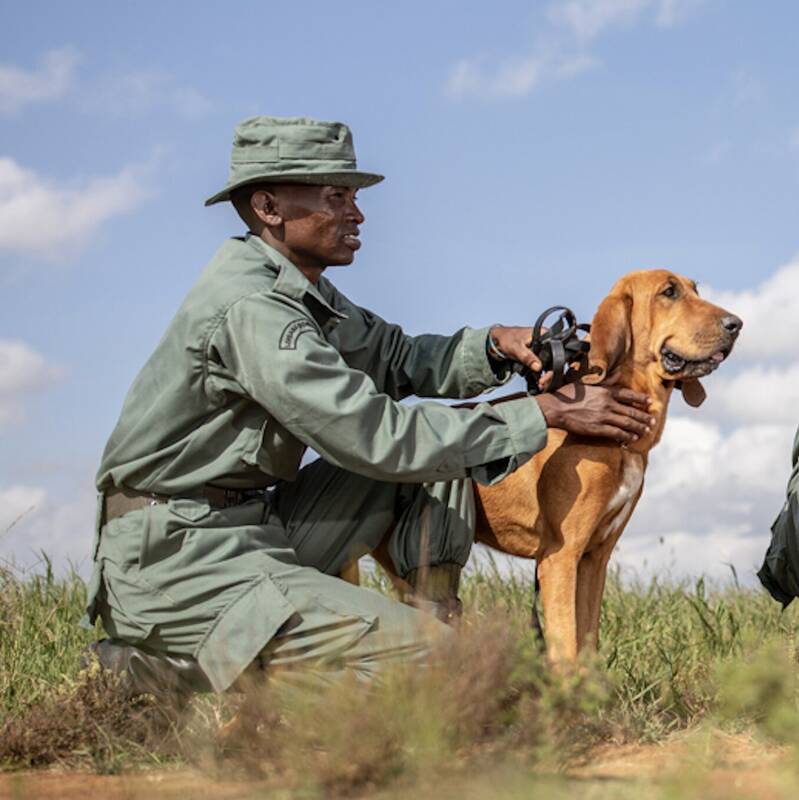
Anti-poaching Dogs Display
Approx. one hour
Interact with the dog keepers and learn about what it takes to look after the specially trained canine team. Guests are encouraged to try and evade the sniffer dogs, not only is this great fun, but it helps to offer genuine training for the dogs.
More about Anti-poaching Dogs Display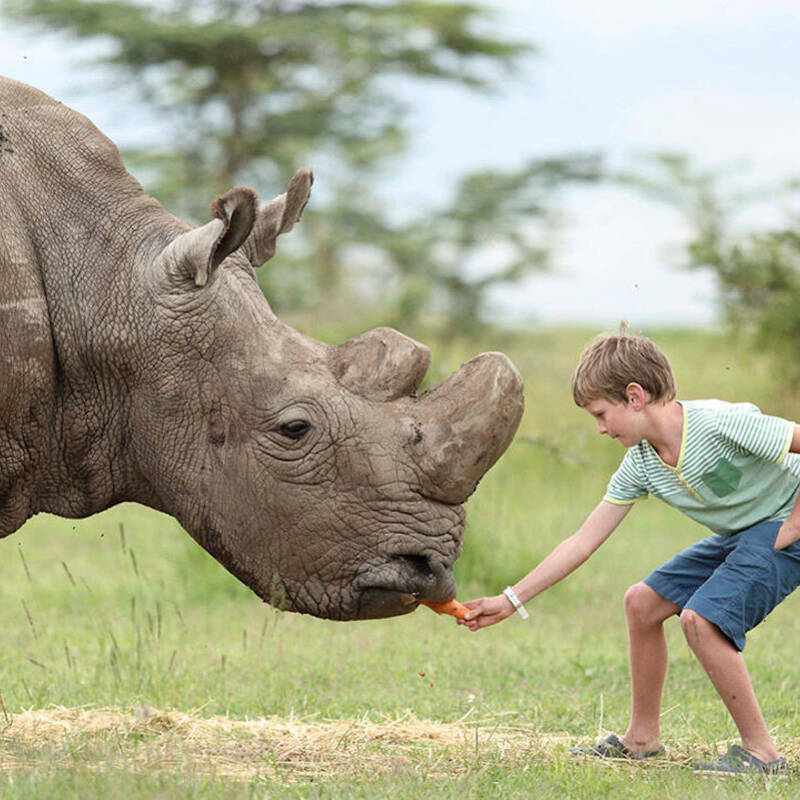
Northern White Rhinos visit
One hour, usually as part of your drive
Visit the Endangered Species Enclosure at Ol Pejeta Conservancy for a close encounter with the last two remaining northern white rhinos. You can visit either by game drive vehicle or visit on horseback if you're an experienced rider. Other rare species include Jackson's hartebeests and Grevy's zebras.
More about Northern White RhinosOther lodges in Laikipia
Alternative places to stay in this same area.
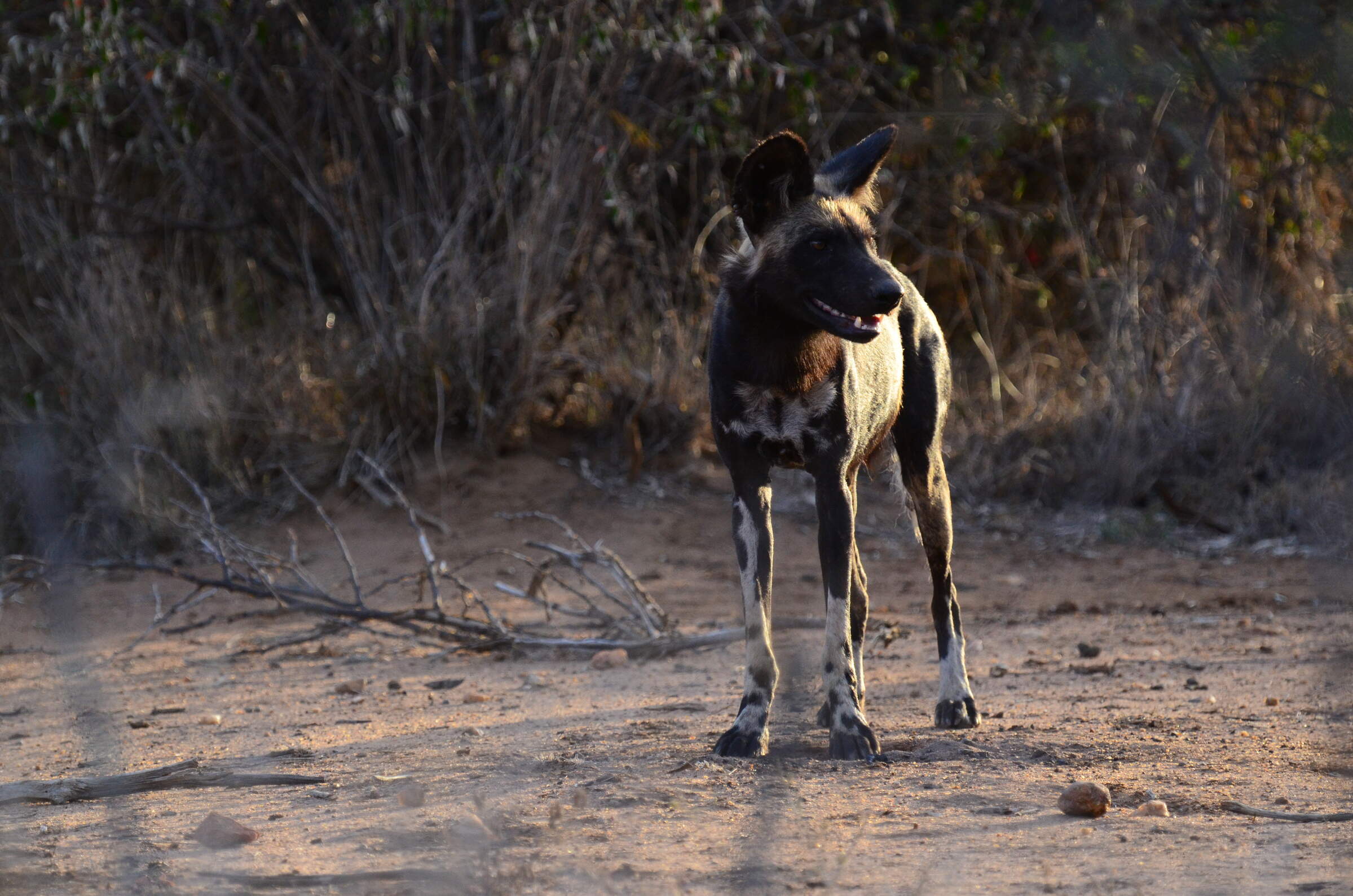
Laikipia Wilderness
Laikipia Wilderness is a rustic owner-managed bush camp, in excellent wild dog territory, offering outstanding guiding.
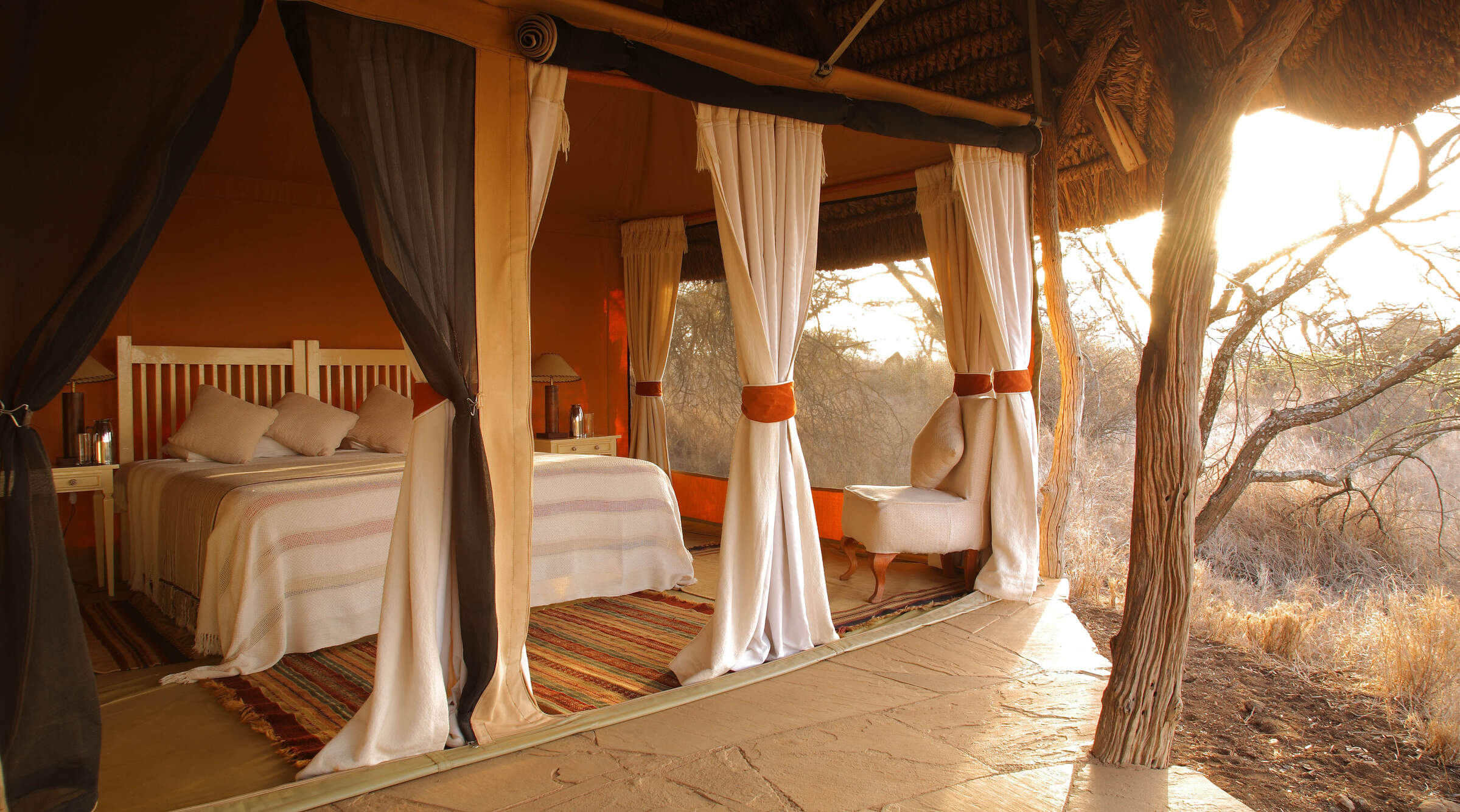
Lewa Safari Camp
Lewa Safari Camp is a comfortable and homely tented lodge, located in the Lewa Conservancy and offering a relatively exclusive safari away from mass tourism.
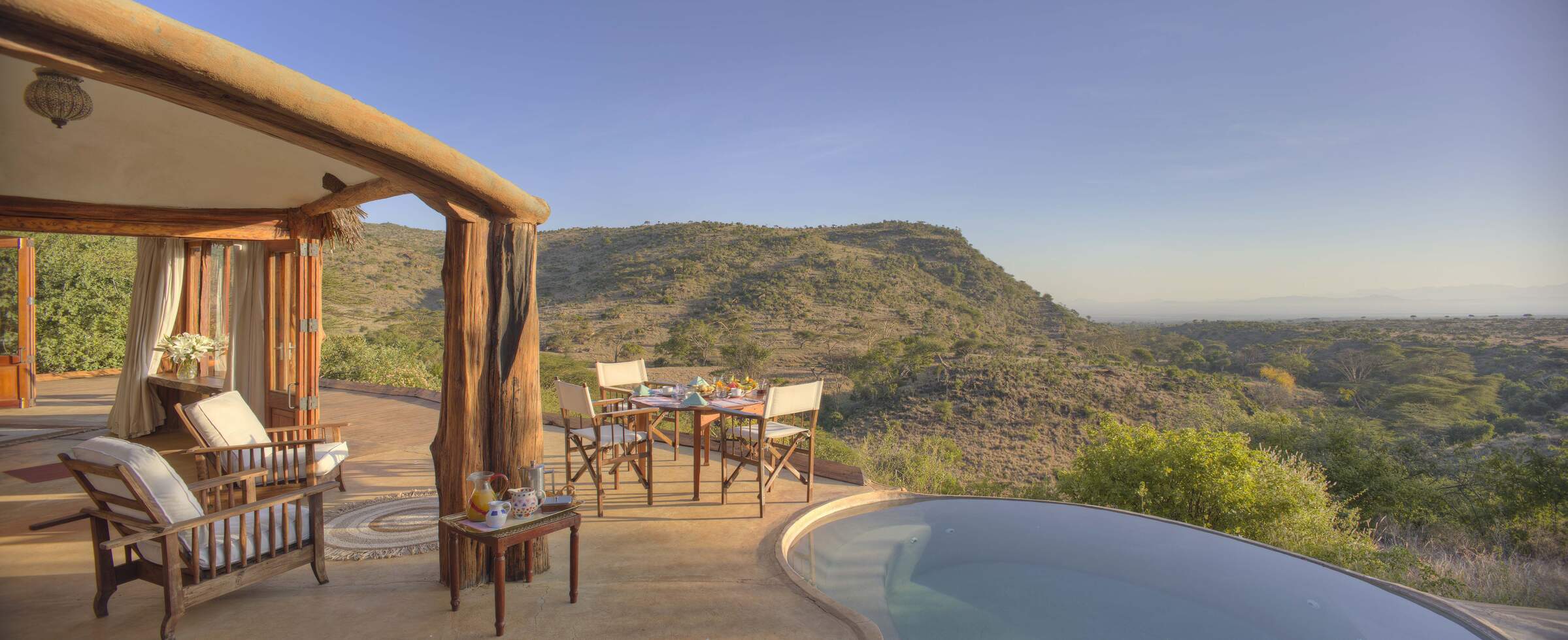
Lewa Wilderness
Lewa Wilderness is a comfortable, fenced safari lodge with nine cottages, great views and a huge range of activities.
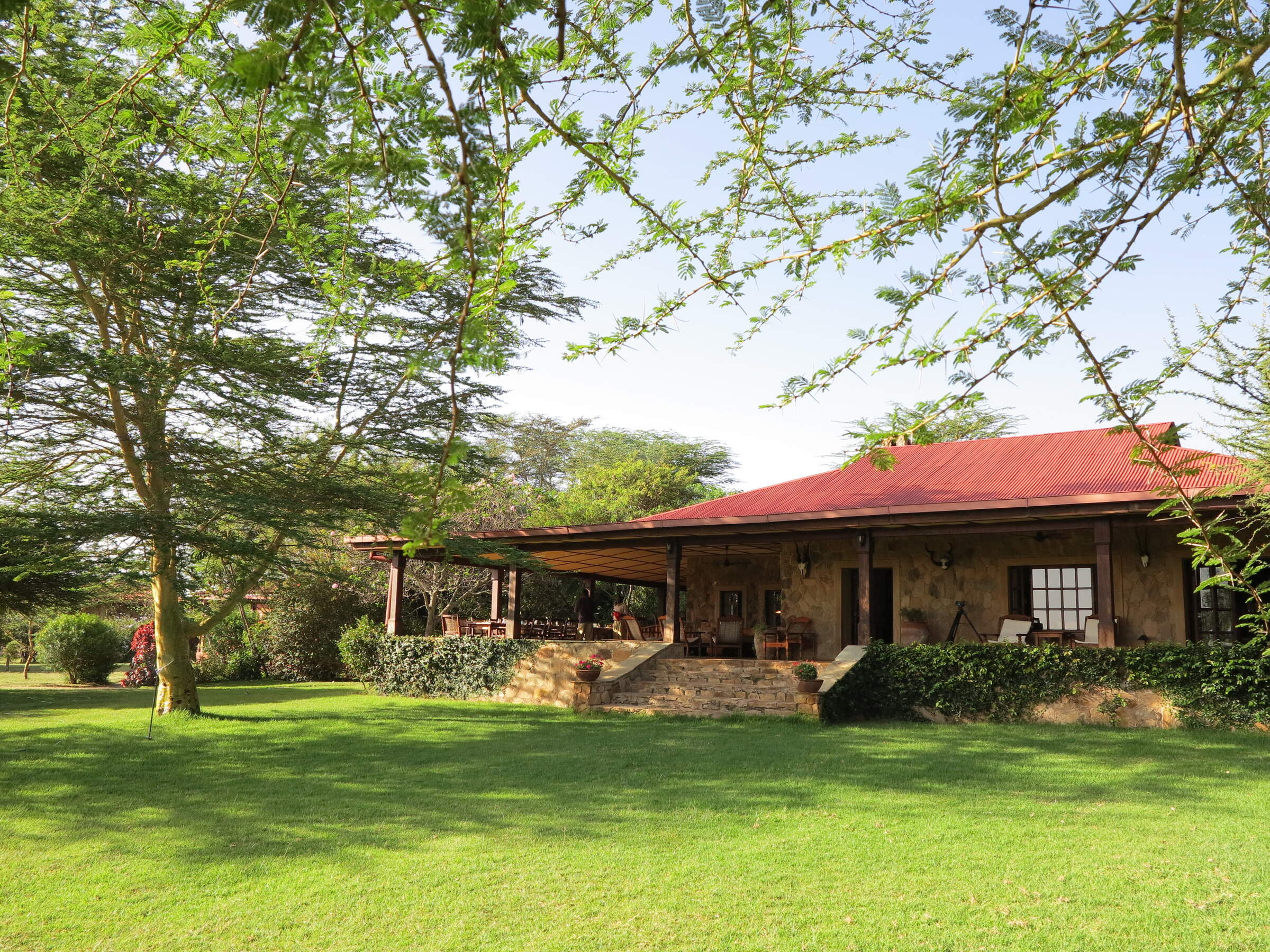
Sosian
Sosian Lodge is a distinctive, estancia-style ranch house on a former cattle ranch, with great opportunities for riding, relaxing and seeing wild dogs and other savannah wildlife.
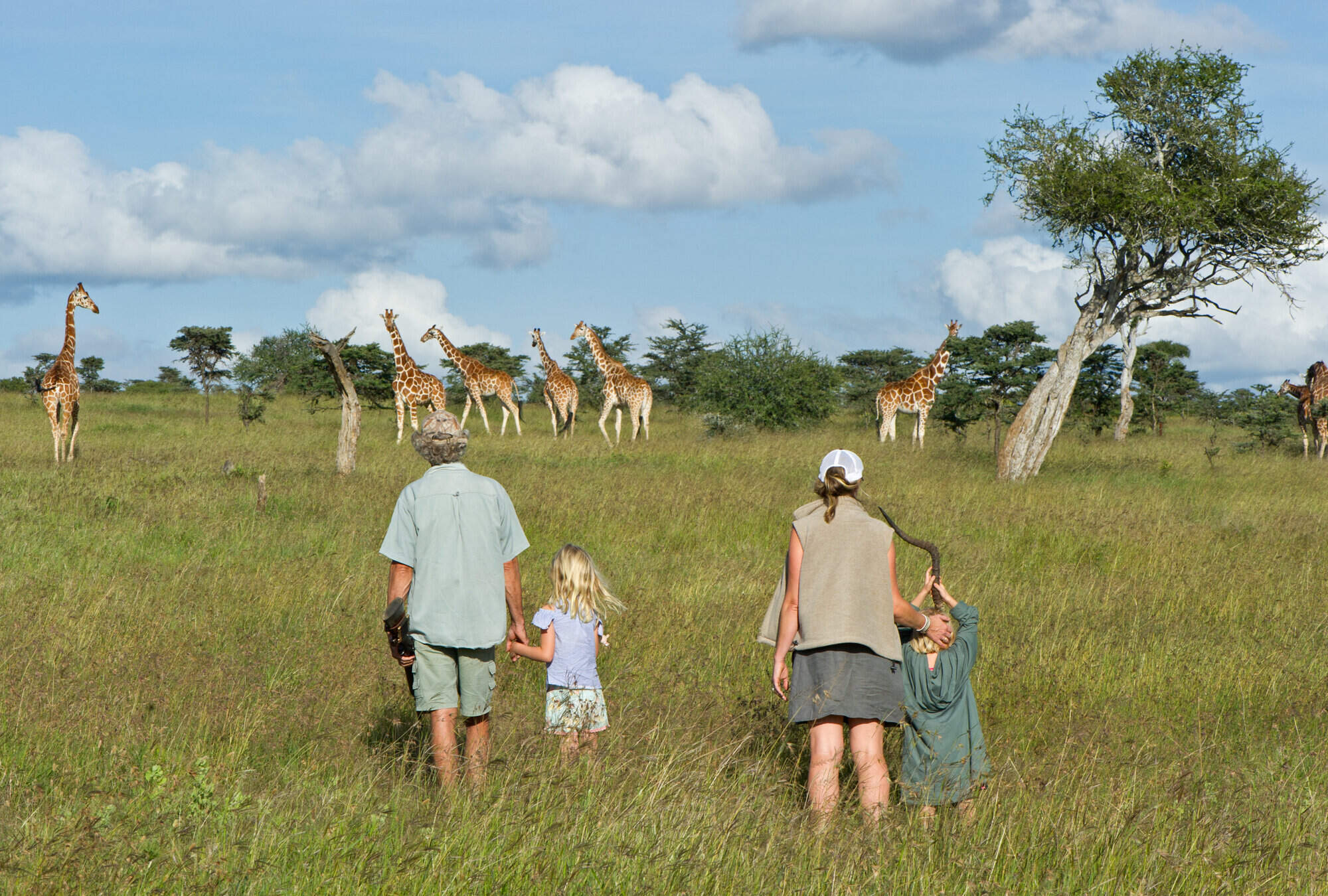
El Karama Lodge
El Karama is a comfortably rustic, very personal, riverside eco-lodge on a game-rich private ranch in Laikipia, an hour’s drive north of Nanyuki airport.
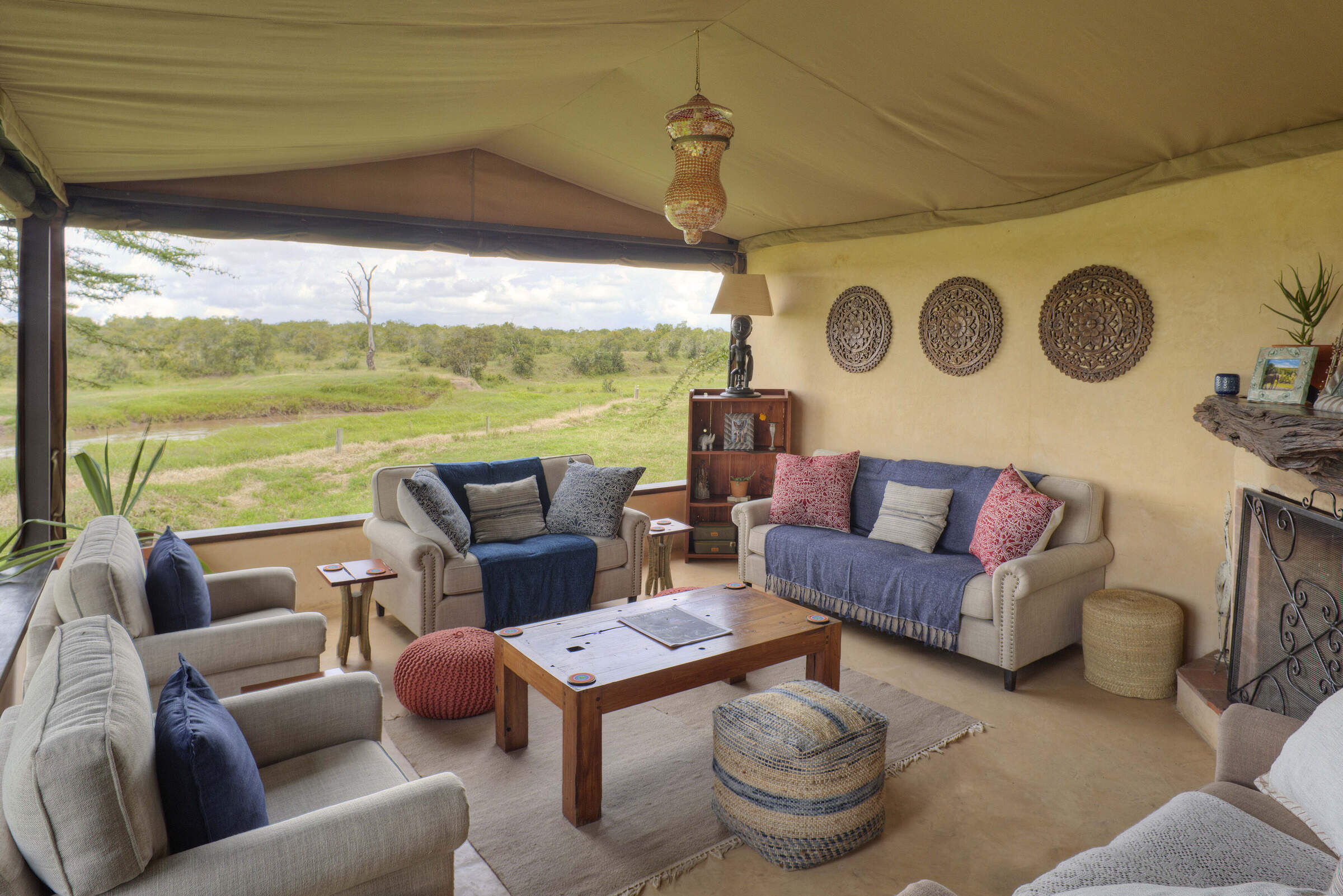
Ol Pejeta Bush Camp
Ol Pejeta Bush Camp is a simple camp, with comfortable tents, delivering an authentic wilderness experience backed up by good food and guiding.
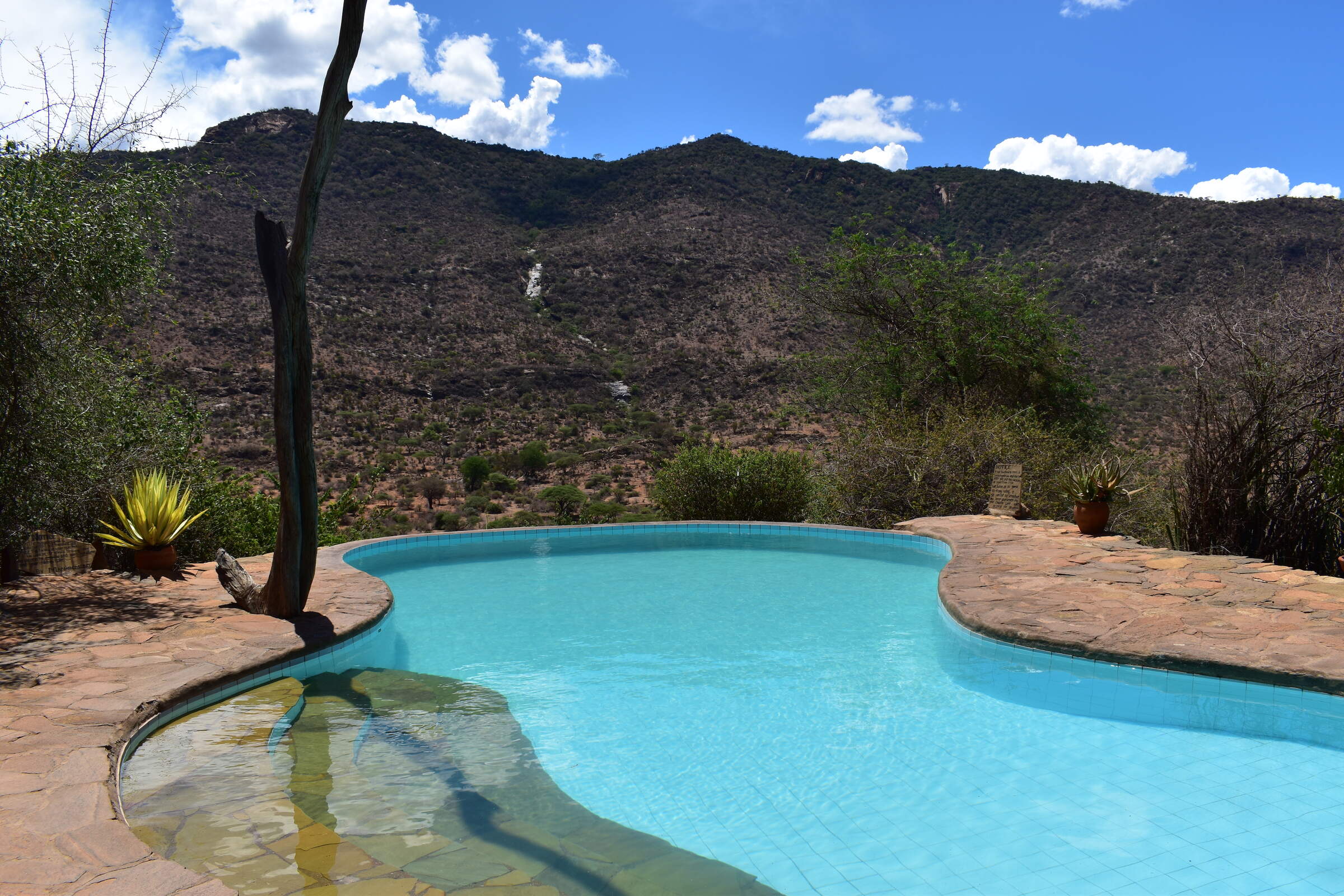
Il Ngwesi Eco-Lodge
The community-owned Il Ngwesi Eco-Lodge sits atop a small hill in the remote Il Ngwesi Group Ranch, a two-hour drive north of Lewa Conservancy in north-eastern Laikipia.
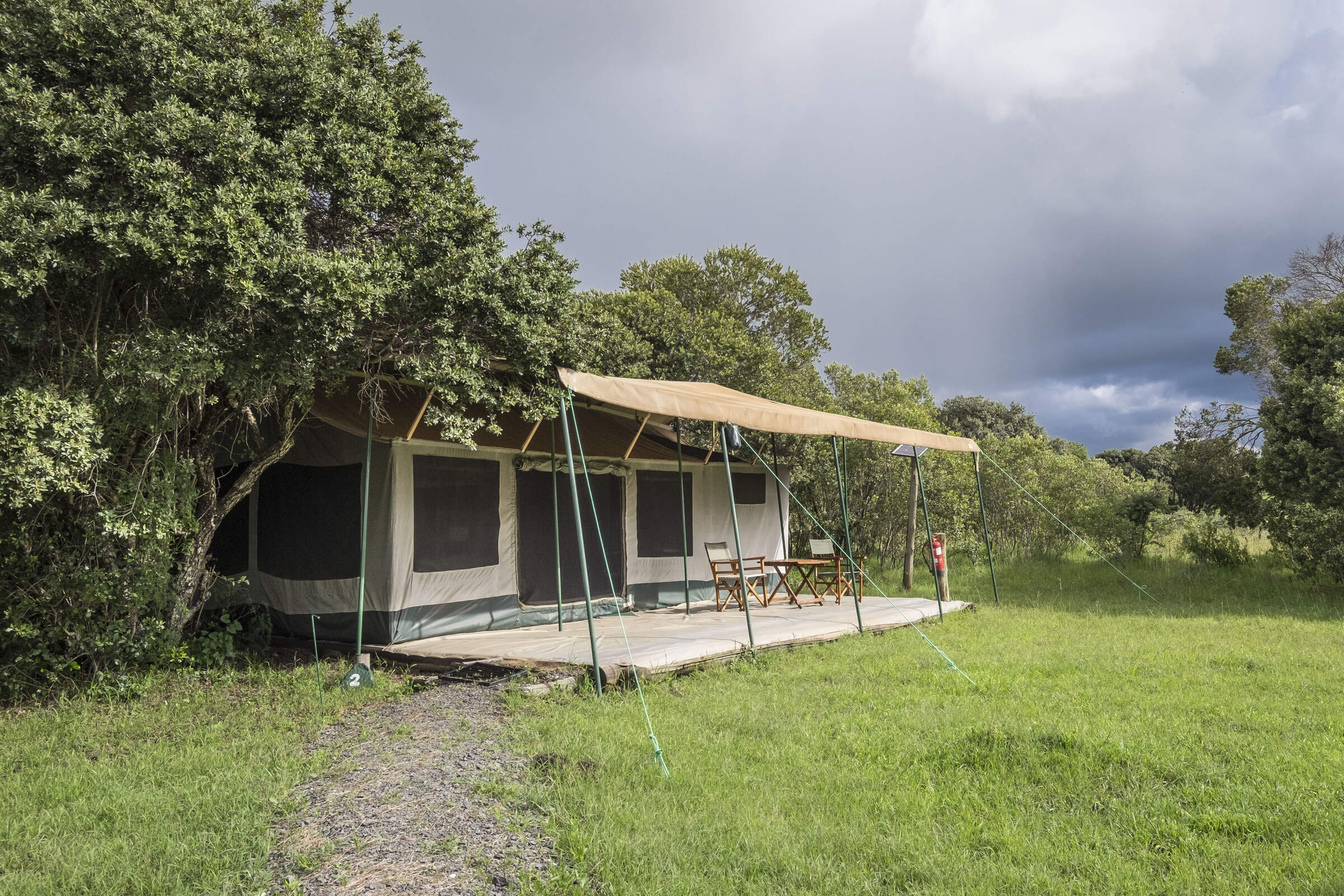
Porini Rhino Camp
Porini Rhino Camp is a small, simple, well established tented camp, with a keen focus on sustainable and low-impact tourism.
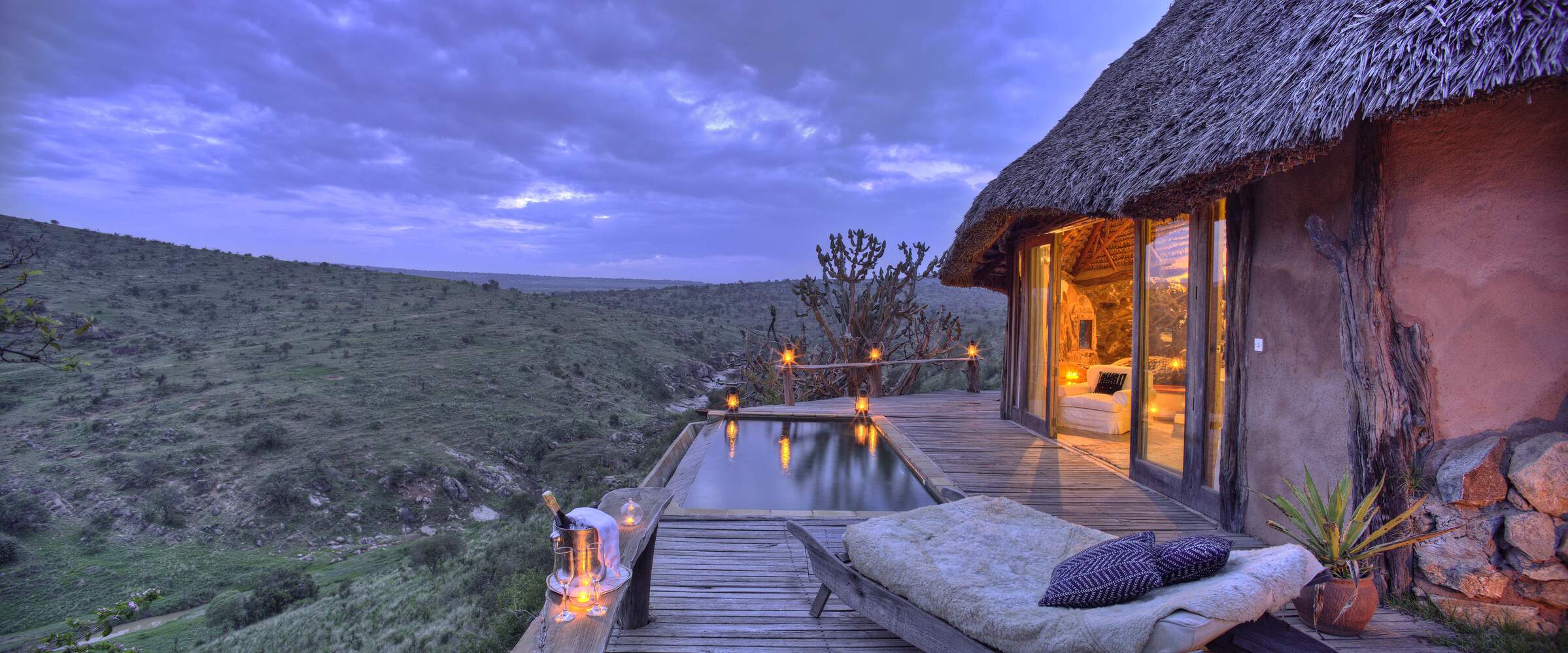
Borana
Borana is a comfortable and striking lodge on the Borana Conservancy in eastern Laikipia, offering pleasant accommodation with good food and service and a very wide range of activities.
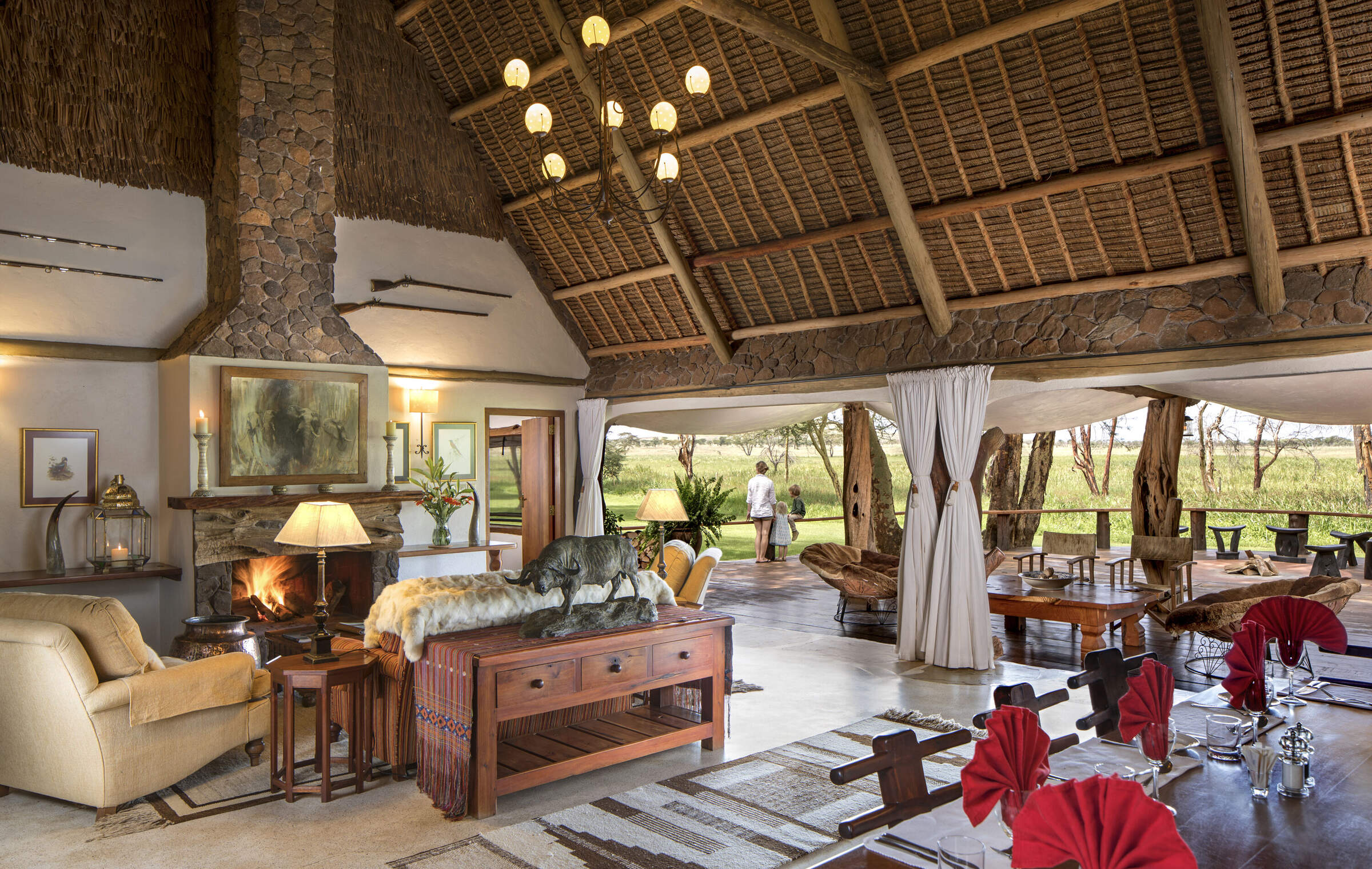
Sirikoi
Sirikoi is a small, very high-quality safari camp with excellent service and food and a wide selection of activities.
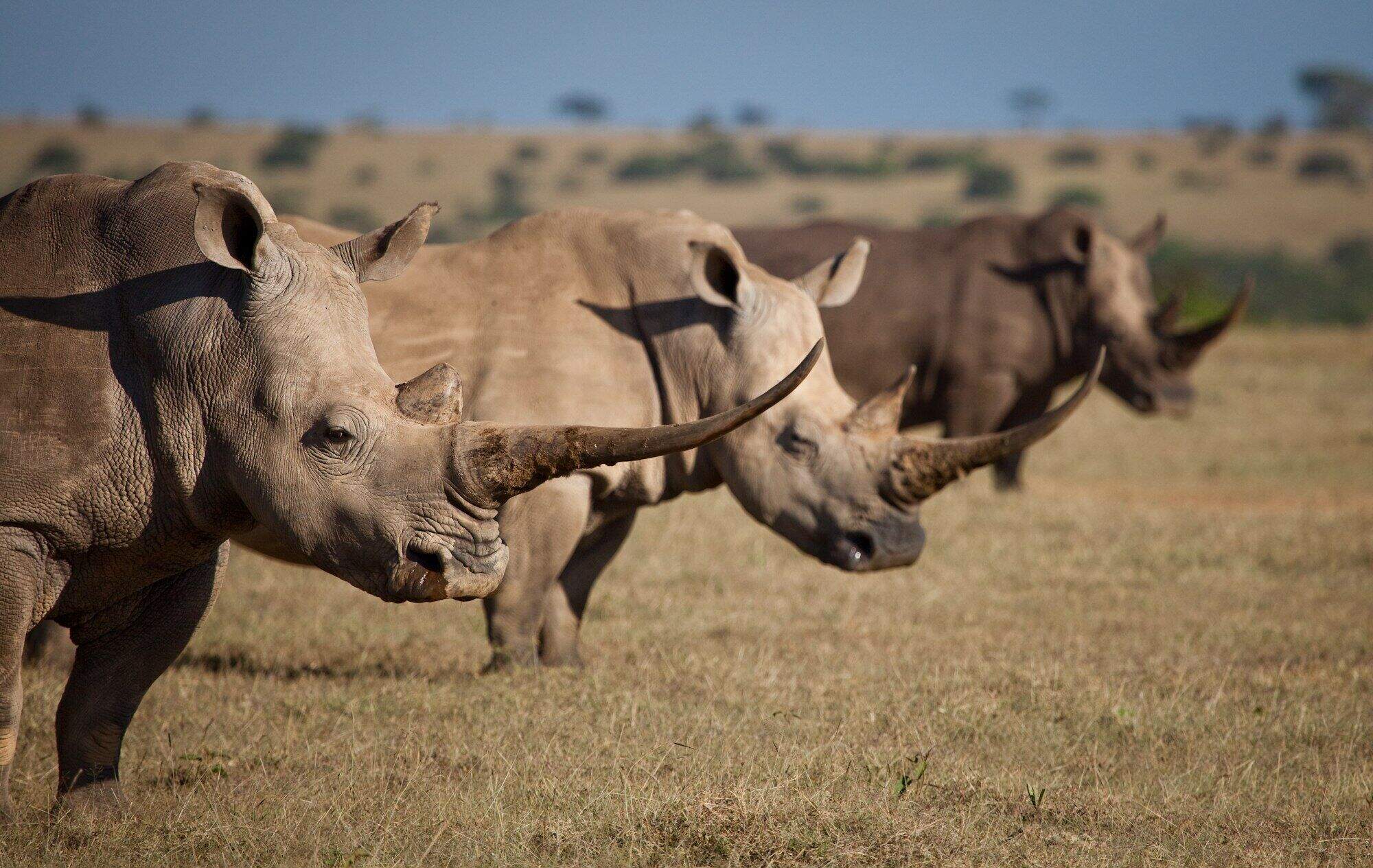
Solio Lodge
Solio Lodge is an exclusive and luxurious bush lodge set in the private Solio Game Ranch in southern Laikipia.
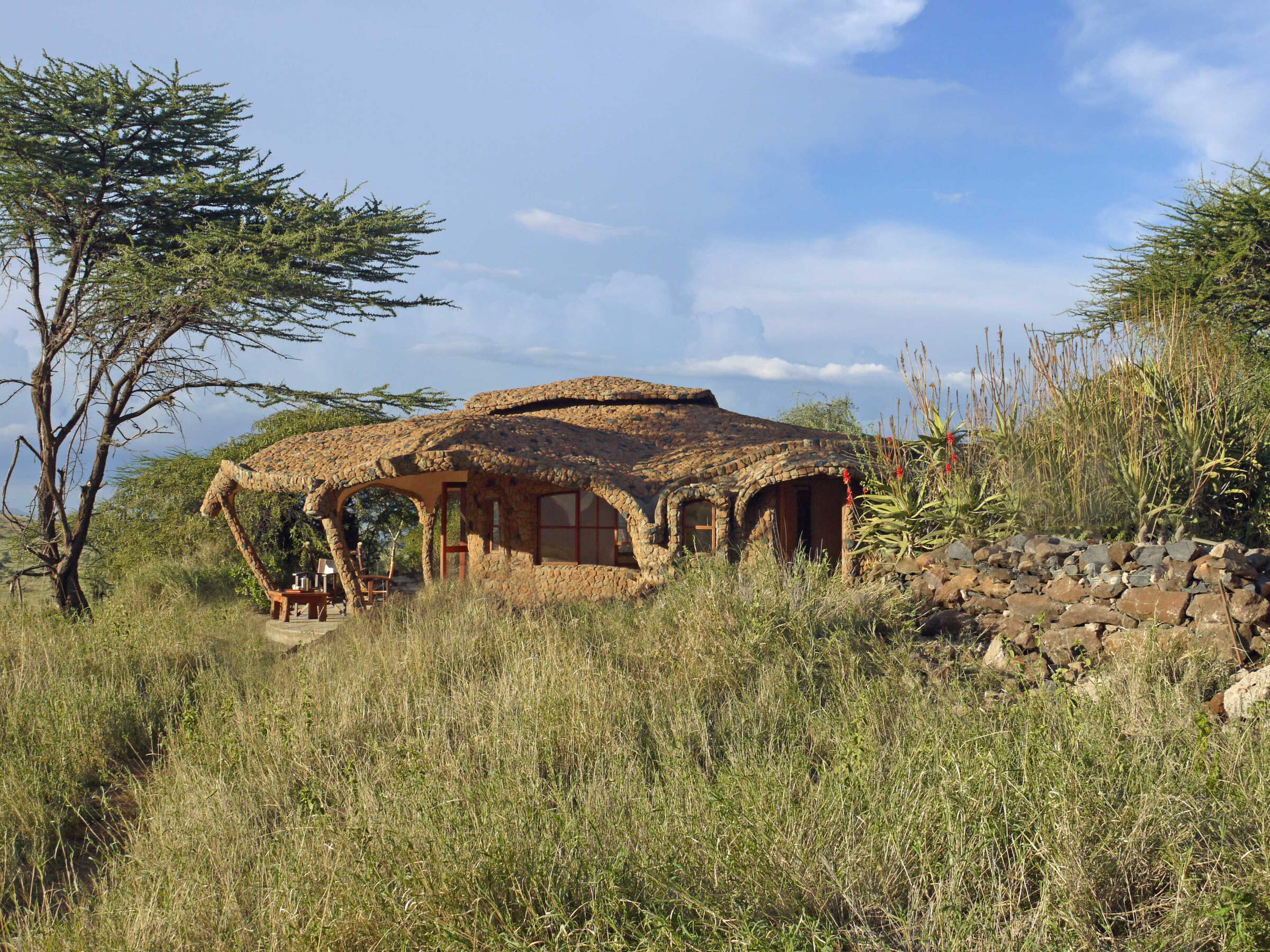
Lewa House
Lewa House is a very comfortable, boutique safari lodge located on the Lewa Conservancy, north of Mount Kenya.
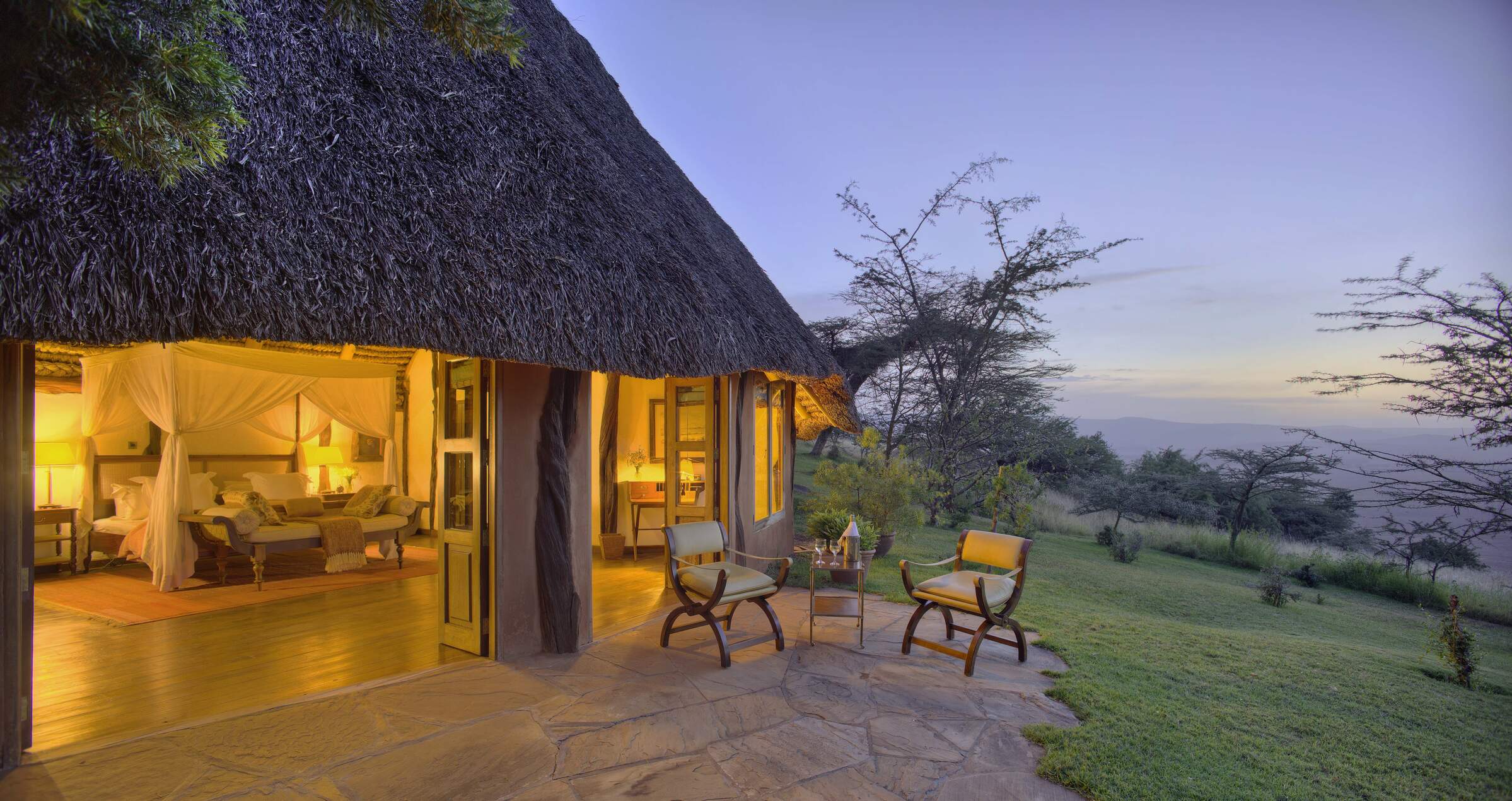
Kifaru House
Kifaru House is a small, stylish safari lodge in the Lewa Conservancy, with beautiful views across the landscape.
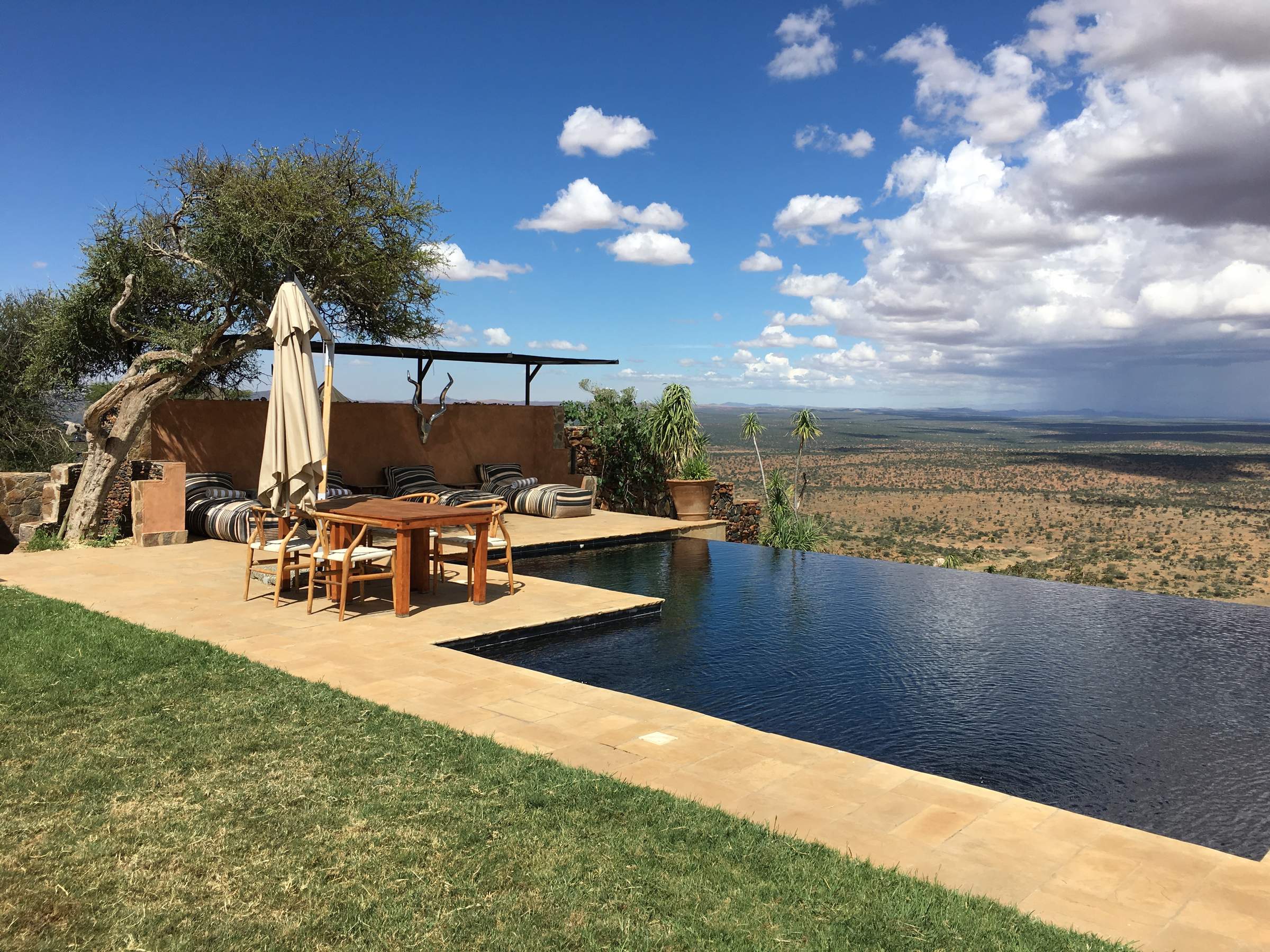
Loisaba Tented Camp
Loisaba Tented Camp is a luxury safari base of tented rooms, ranged along a ridge in the Loisaba Conservancy, facing Mount Kenya. The camp was completely rebuilt in 2016.
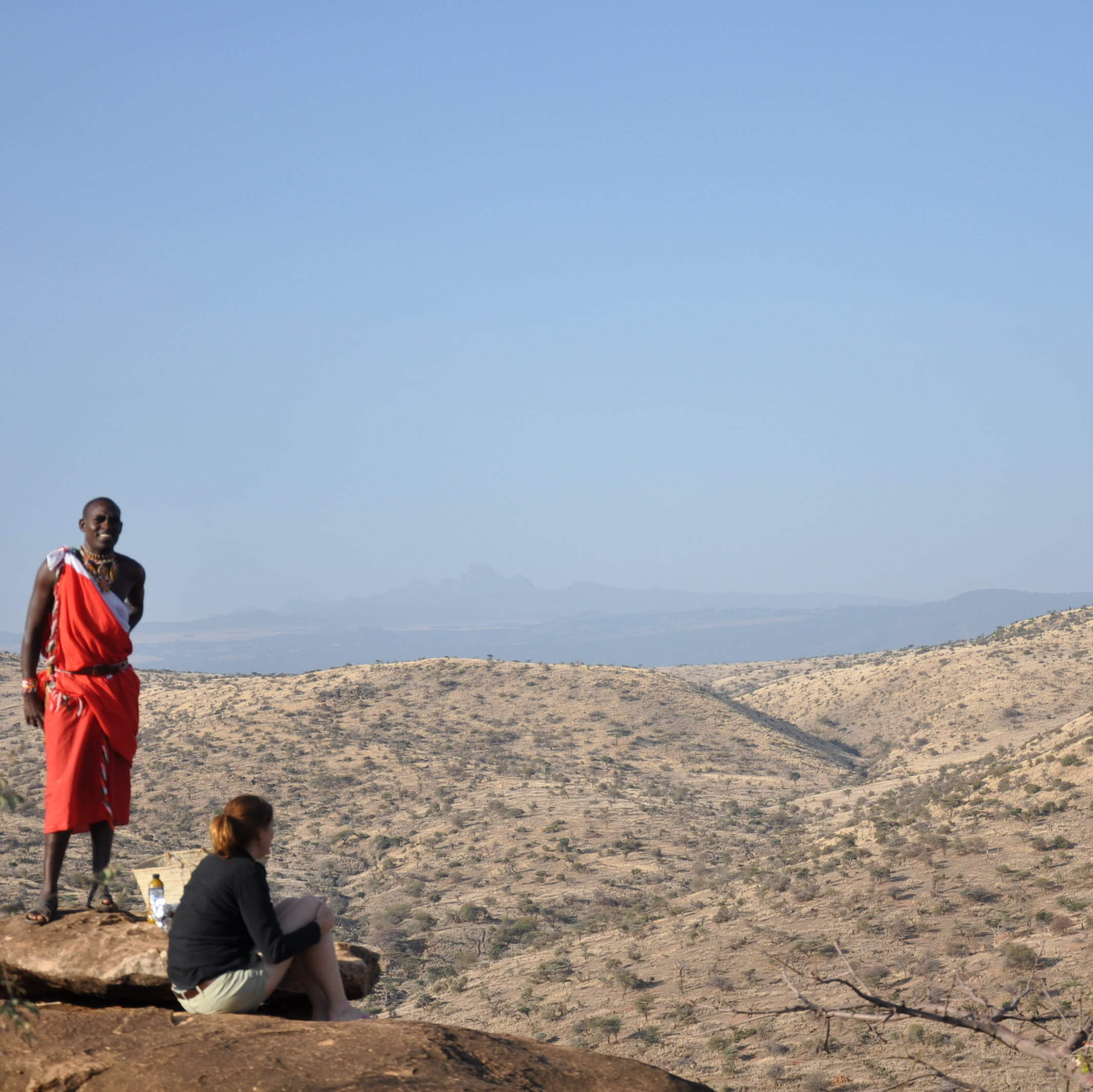
Tassia Lodge
Tassia offers a unique wilderness experience in a remote location: come here for cultural interaction, stunning views and something a bit different.
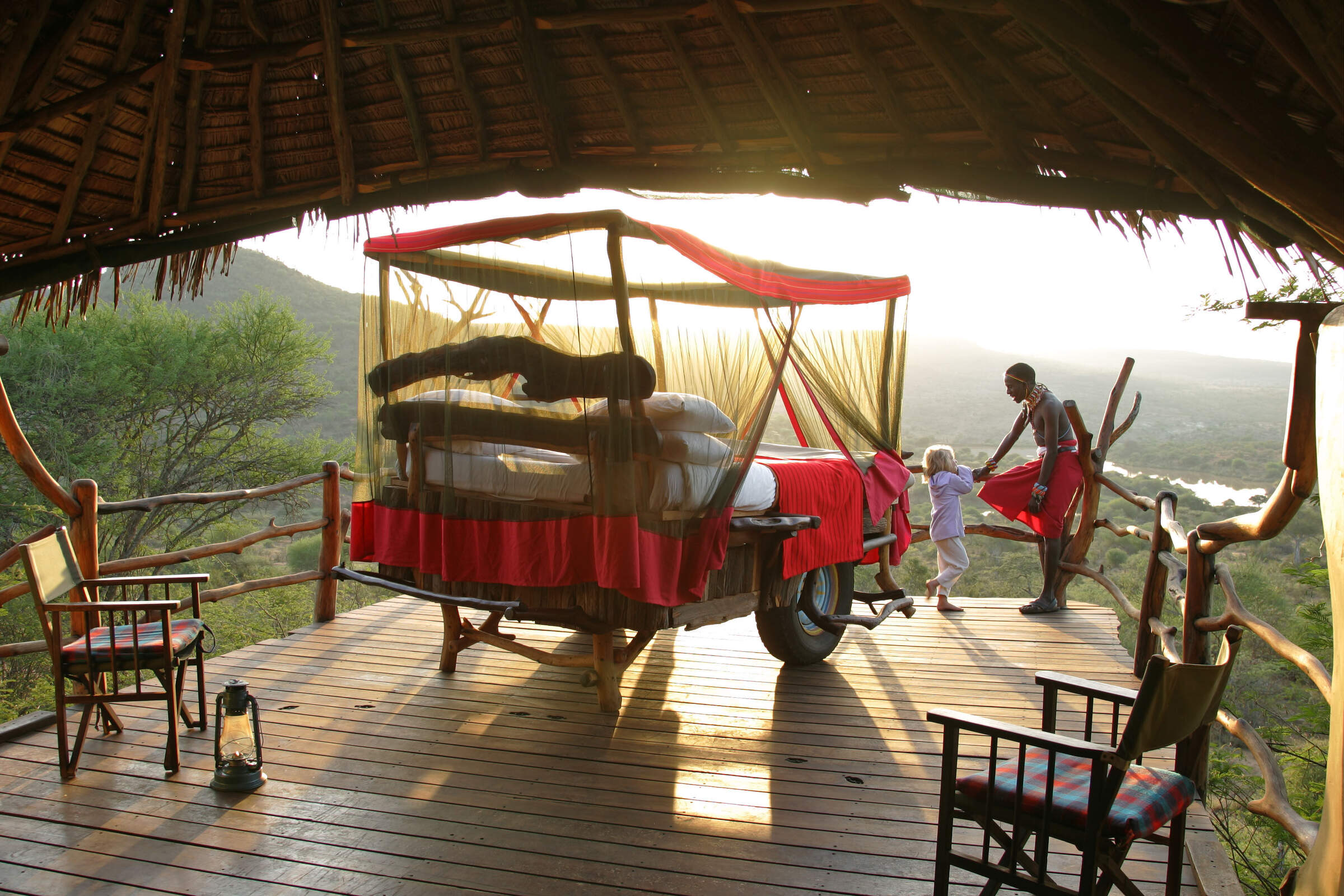
Loisaba Star Beds
Loisaba Starbeds is a simple camp of 4 rooms with pull-out, open-air 'star beds', located near a dam in the Loisaba Conservancy, in northwestern Laikipia.
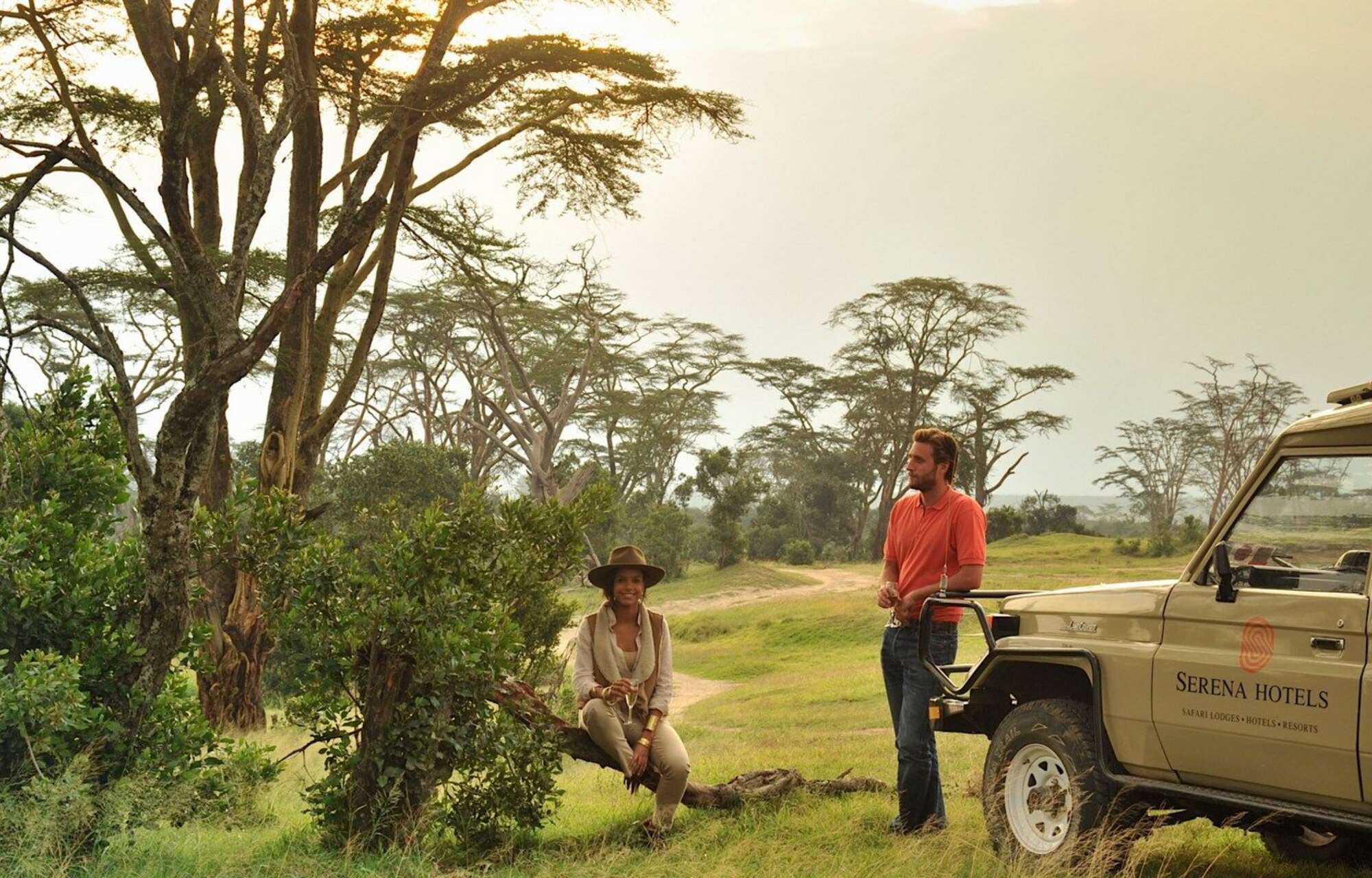
Sweetwaters Serena
Sweetwaters Serena is a large, older tented camp – the largest camp in the Laikipia region – in the eastern part of the Ol Pejeta Conservancy.
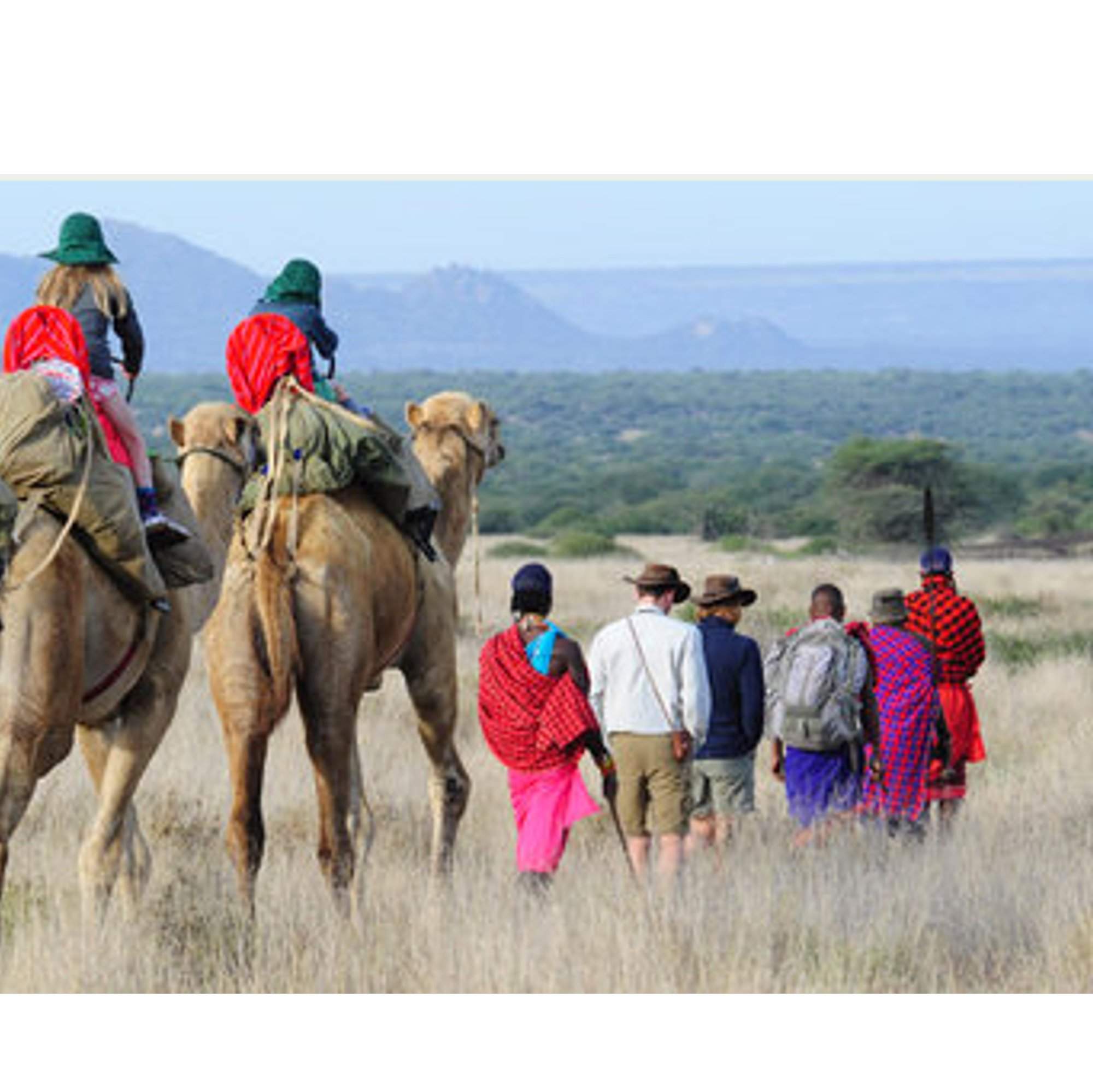
Karisia Walking Safaris
Karisia Walking Safaris operates camel assisted, multi-day walking safaris from its main camp, Tumaren, set in a remote part of Laikipia.
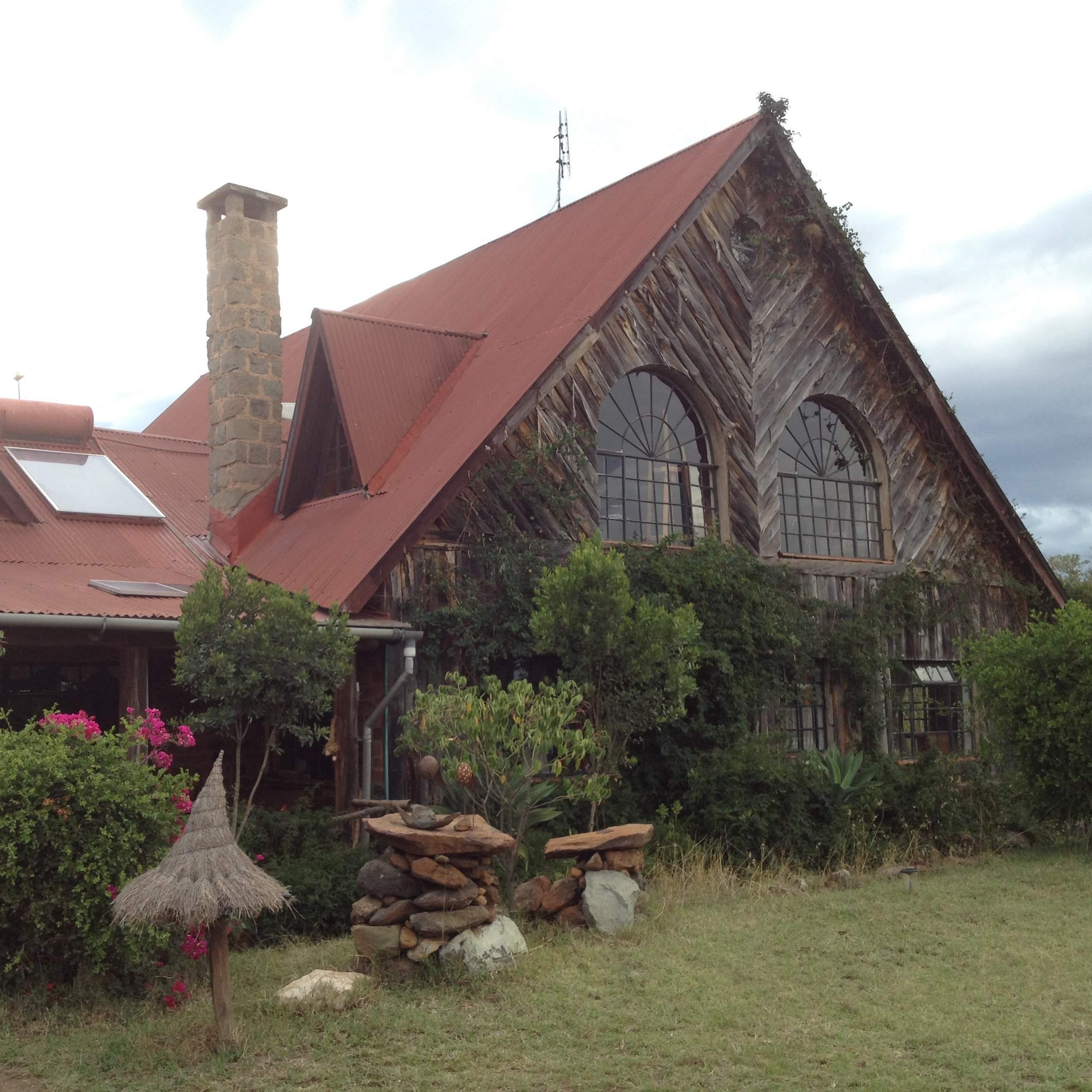
Sandai
Sandai is a pretty, owner-run homestay, set between the Aberdare Range and Mount Kenya, offering a range of activities at extra cost.
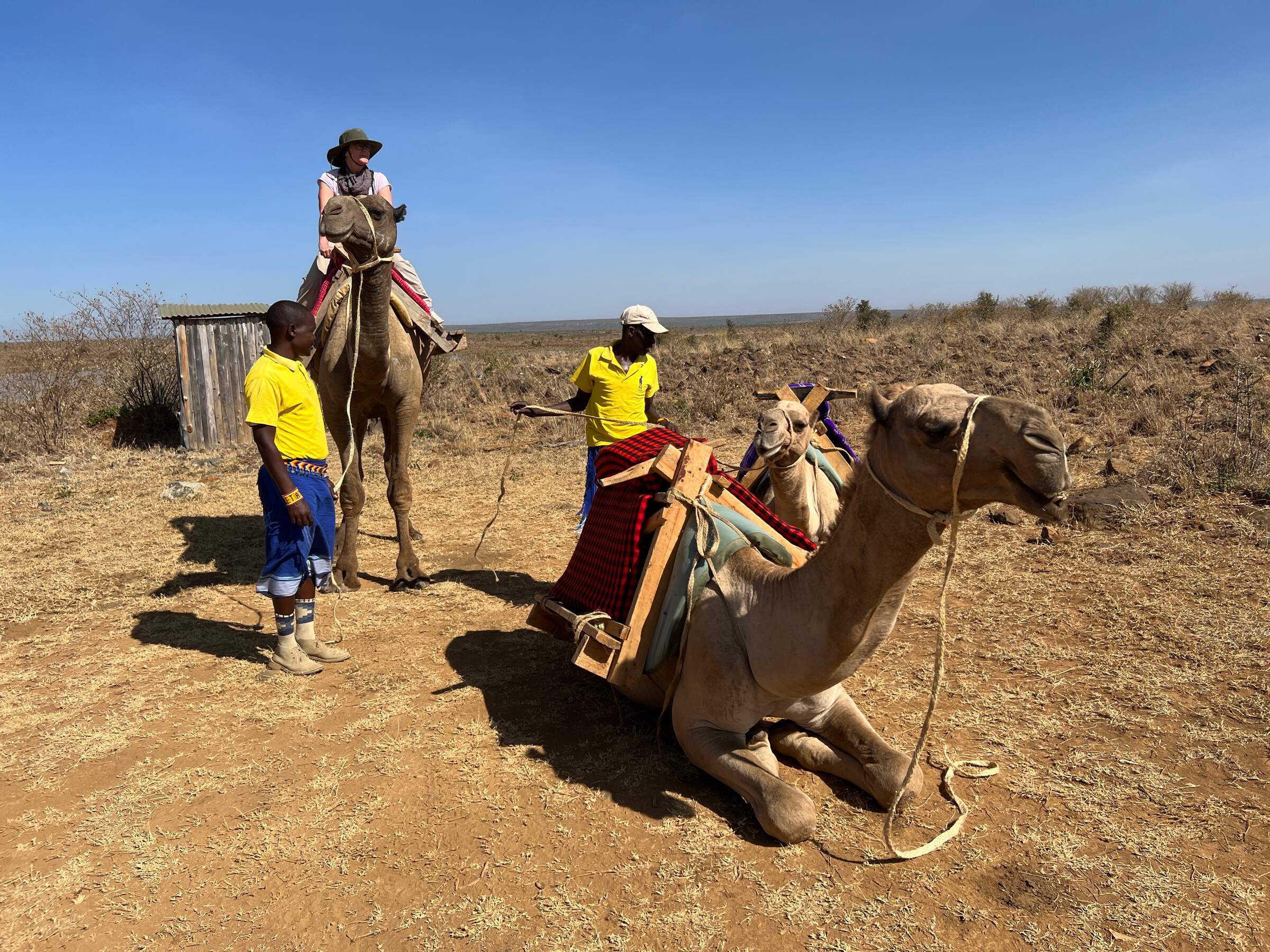
Ekorian's Mugie Camp
Ekorian's Mugie Camp is a pleasant, family-friendly safari camp in a remote location in northwestern Laikipia.
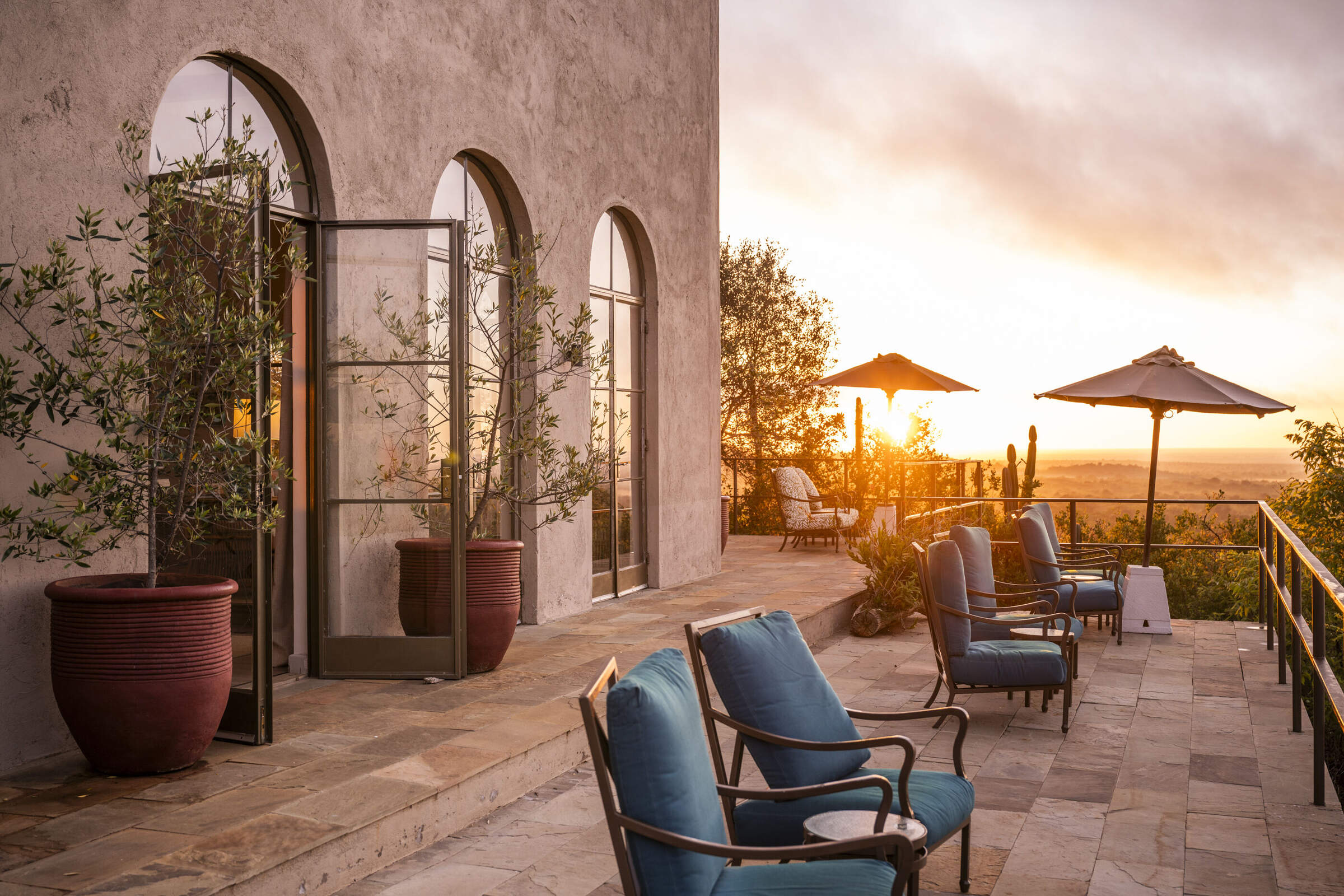
Governors' Mugie House
Governors' Mugie House – a substantial, luxury safari lodge – is one of only two properties in the Mugie Conservancy in northwestern Laikipia.
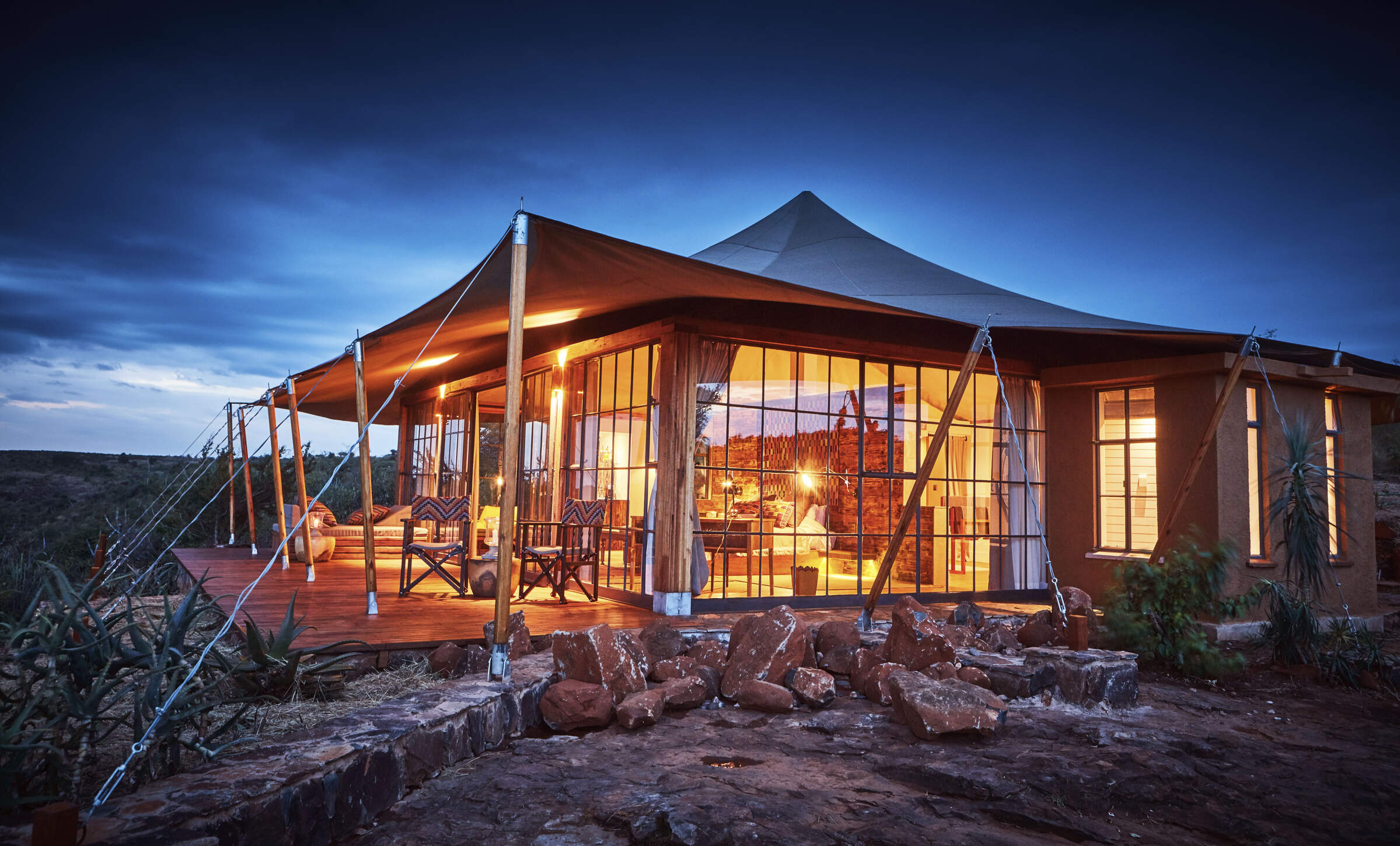
Lodo Springs
Lodo Springs is a spectacularly located luxury lodge in a remote spot in the Loisaba Conservancy, sister lodge to Loisaba Tented Camp and Loisaba Star Beds.
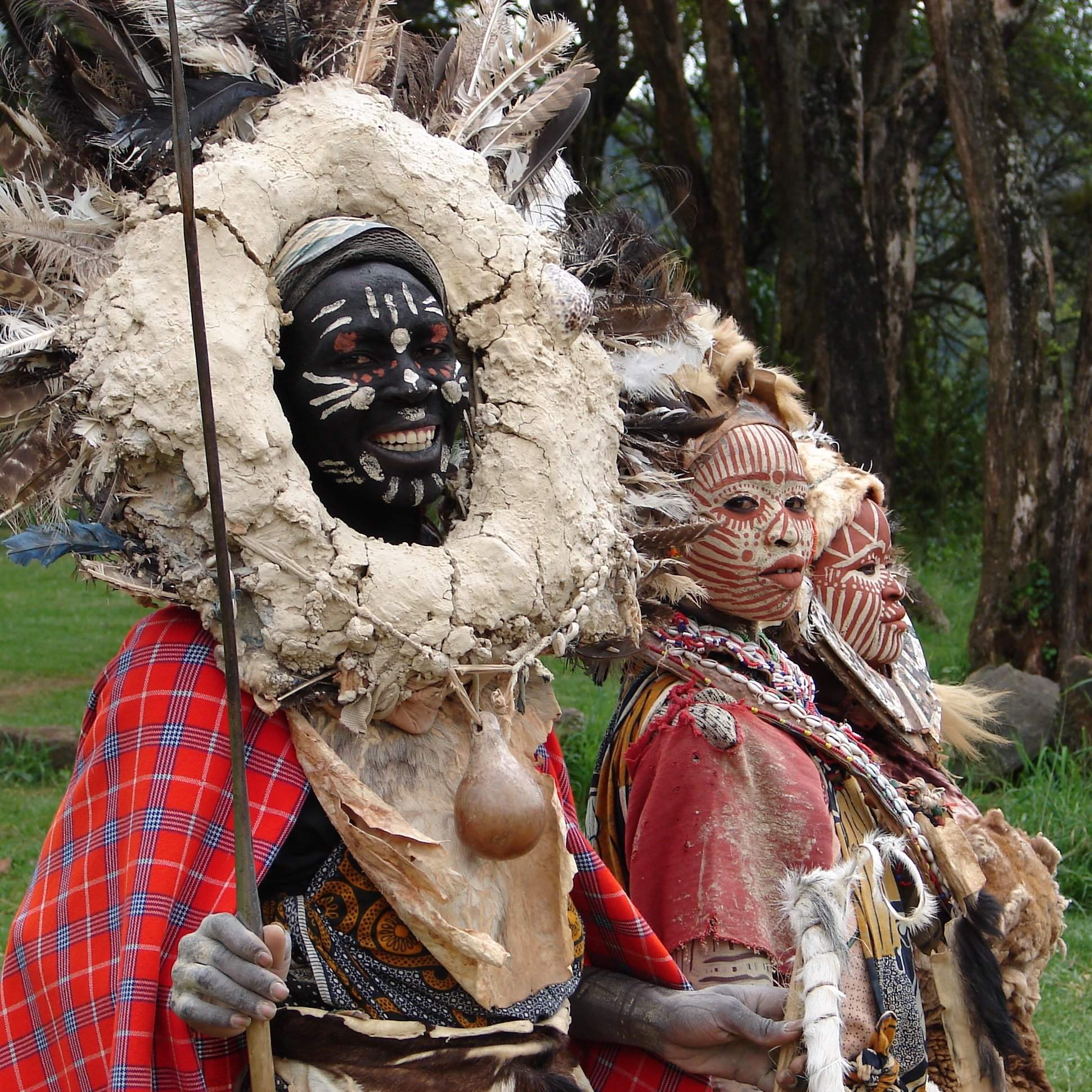
Thomsons Falls Lodge
Thomsons Falls Lodge is a simple hotel dating back to the colonial era, located above the falls of the same name, near the western Laikipia town of Nyahururu.
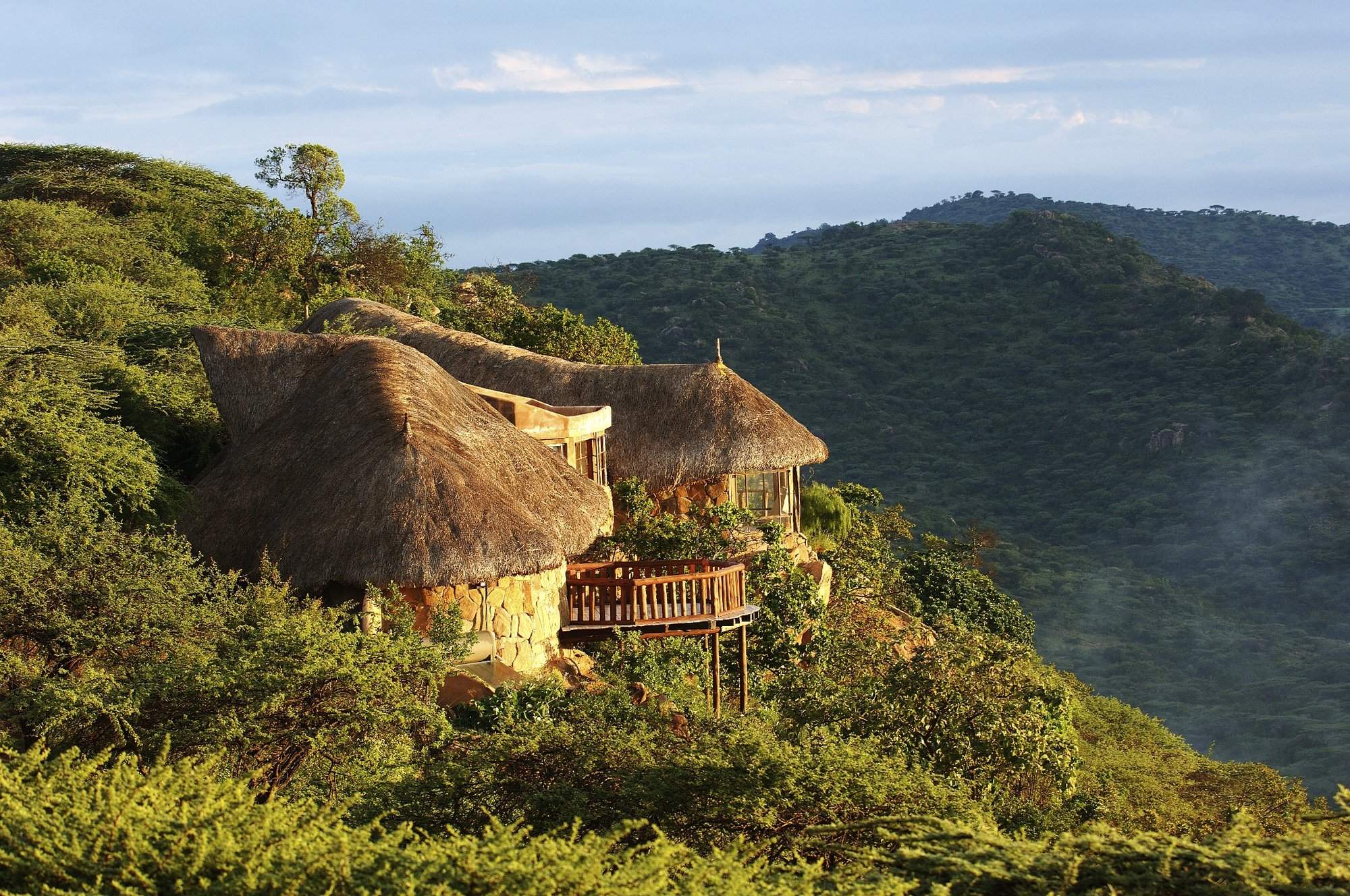
Sanctuary at Ol Lentille
The Sanctuary at Ol Lentille is an unusual safari lodge in northern Laikipia, consisting of three exclusive villas, and offering a huge range of activities.
When to go to Laikipia
Our month by month guide: What it's like to visit Kicheche Laikipia in Laikipia
Jan
Feb
Mar
Apr
May
Jun
Jul
Aug
Sep
Oct
Nov
Dec
Laikipia in January
Clear, warm days and mild nights make this a popular time for safaris in Laikipia. It's excellent for game viewing in all the conservancies, where water sources attract diverse wildlife. The dry conditions make it easier to spot black rhinos, lions and leopards. Star bed sleep-out options at a number of lodges are particularly magical under the clear night skies.
After the New Year period, many camps and lodges treat January as mid-season, offering good value. The landscape retains some greenery, enhancing photography.
- Clear days ideal for safaris
- Excellent visibility for wildlife viewing
- Dry riverbeds attract wildlife to water sources
- Calving season for wildebeest and antelopes
- Palearctic migrant birds abundant
Our view
Fantastic: the very best time to visit
Weather in January
Laikipia in February
With the short dry season well established in Laikipia, wildlife gathers close to water points, making it an excellent time for safaris. Ol Pejeta and Lewa Wildlife Conservancies offer prime viewing opportunities for endangered species like black rhinos and Grevy's zebras. Solio Rhino Conservancy provides exceptional black rhino sightings during this period. The grass is grazed down, improving visibility across the region.
February is ideal for walking safaris, where you can appreciate the smaller details of the ecosystem. The clear skies make stargazing from star beds an unforgettable experience. Cultural visits to local communities are particularly rewarding, as the pleasant weather encourages outdoor activities and interactions.
- Prime time for wildlife gathering near water
- Ideal conditions for walking safaris
- Palearctic migrant birds still present
- Low rainfall makes game drives rewarding
Our view
A very good time to visit
Weather in February
Laikipia in March
As March progresses in Laikipia, the weather becomes increasingly hot and humid with more rain likely later in the month. Through most of the month, conditions are still good for game drives in most districts. As the month advances, the buildup to the rainy season becomes apparent.
This period can offer unique photographic opportunities as animals congregate around diminishing water sources. Accommodation costs decrease as the low season approaches.
- Early month offers great wildlife viewing
- Hot weather transitions to occasional rains
- Lower visitor numbers
- Lush vegetation begins to appear
Our view
A good time to visit, with pros & cons
Weather in March
Laikipia in April
April usually sees established, serious rainfall in much of Laikipia, transforming the landscape. The southeast monsoon wind brings cooler temperatures and frequent downpours. While game viewing can be challenging due to lush vegetation, the green season offers unique experiences, with new-born animals visible among the verdant scenery.
The landscape bursts into life with vibrant colours, ideal for photography. Birdwatching is excellent with many species breeding. This is a quieter time for tourism, with lower accommodation rates at many places allowing for a more exclusive safari experience for great levels of service.
- Long rains begin, transforming landscapes
- Green season offers unique photo opportunities
- Lower rates at Laikipia's luxury lodges
- Buffalo and zebra calving season commences
- Birdwatching excellent
Our view
A good time to visit, with pros & cons
Weather in April
Laikipia in May
May in Laikipia is characterised by ongoing rains and lush vegetation. While game viewing can be trickier, the vibrant landscapes offer spectacular photographic opportunities with very little dust. The landscapes are a sea of green, with diverse and thriving flora.
This is an excellent time for birdwatching across the region as breeding season continues. The Ewaso Nyiro river swells impressively. Despite potential challenges, patient visitors may witness dramatic scenes of predators hunting in the thick vegetation.
- Lush vegetation makes wildlife spotting trickier
- Great for landscape and nature photography
- Rutting season for wildebeest and impalas
- Frog breeding season in Laikipia's wetlands
- Mount Kenya views improve with clearer air
Our view
A good time to visit, with pros & cons
Weather in May
Laikipia in June
As June progresses in Laikipia, the rains give way to slightly cooler, cloudy weather. This transition marks the beginning of a long, generally dry, high season for visitors. Game viewing improves as vegetation starts to thin, and conditions are comfortable.
The Ewaso Nyiro river, still full from the rains, attracts diverse wildlife. Accommodation rates begin to rise, reflecting the start of peak season.
- Rains subside, ushering in cooler weather
- High season begins with increased visitors
- Comfortable conditions game viewing
Our view
A good time to visit, with pros & cons
Weather in June
Laikipia in July
July in Laikipia brings cooler temperatures and ideal conditions for safaris. Animals concentrate around water sources on the conservancies, providing excellent game viewing opportunities.
July marks the peak of the high season, with higher accommodation rates and visitor numbers. The dry conditions make it easier to spot elusive species like leopards and black rhinos.
- Cool weather perfect for walking and riding
- Wildlife concentrates around water sources
- Excellent conditions for photography tours
Our view
A good time to visit, with pros & cons
Weather in July
Laikipia in August
August in Laikipia offers mild, dry weather, perfect for safaris. The conservancies teem with wildlife, including endangered species like black rhinos and Grevy's zebras. The landscapes offer stunning vistas and excellent conditions for game drives and walking safaris. The dry conditions make it easier to spot big cats across the region. This is peak season, so expect higher visitor numbers and accommodation rates.
You might consider combining your Laikipia safari with a stay at the nearby Samburu National Reserve, known for its “northern five” species – Grevy’s zebra, reticulated giraffe, beisa oryx, gerenuk and Somali ostrich.
- Peak season for wildlife viewing in Laikipia
- Mild weather ideal for outdoor activities
- Busy period requires advance bookings
Our view
A good time to visit, with pros & cons
Weather in August
Laikipia in September
As September progresses in Laikipia, the weather typically remains dry with clearing skies, signalling excellent safari conditions. Early September can be busy, but visitor numbers decrease later in the month. In the conservancies, game viewing is exceptional as animals congregate around limited water sources.
September generally offers excellent conditions for photography.
- Hot, dry weather with good visibility
- Quieter period for more exclusive safaris
- Natural bush fires flush out insects and small animals for predators
Our view
Fantastic: the very best time to visit
Weather in September
Laikipia in October
October in Laikipia brings generally hot and mostly dry conditions, ideal for safaris. It's a favourite month for many visitors due to the good weather and fewer visitors. The conservancies offer excellent game viewing, with animals concentrated around water sources. The Solio Rhino Conservancy provides exceptional rhino sightings in the dry conditions.
Birdwatching is rewarding as Palearctic migrants begin to arrive. Cultural visits to Maasai communities remain a highlight. Consider combining your Laikipia safari with a trip to the nearby Samburu National Reserve for a diverse wildlife experience.
- Warm or hot and mostly dry conditions for safaris
- Migratory birds start arriving
- Perfect for photography
Our view
A very good time to visit
Weather in October
Laikipia in November
November in Laikipia marks the beginning of the short rains, usually in the latter half of the month. This transition brings about dramatic changes in the landscape. Early November can still offer good game viewing before the rains intensify. Then the bush begins to green, creating beautiful scenery.
As the low season begins, accommodation rates decrease, and visitor numbers drop too, allowing for a more exclusive safari experience. Birdwatching becomes excellent with the arrival of many migratory species. November is ideal for photographers capturing the changing landscapes and dramatic skies, with low dust and clear air. Cultural visits to Maasai communities offer insights into how local life adapts to the changing seasons.
- Short rains begin, transforming landscapes
- Low season offers better rates and privacy
- Excellent time for birdwatching in Laikipia
- Lush scenery provides stunning backdrops
Our view
A good time to visit, with pros & cons
Weather in November
Laikipia in December
In a typical December, Laikipia sees the short rains finish by mid-month, leaving the landscape at its most beautiful. Clear blue skies return, heralding the start of the second peak visitor season from around 20 December onwards. The conservancies offer excellent game viewing with lush backdrops.
Christmas can occasionally be wet, but most years see perfect safari conditions by the festive season. This is an ideal time to combine wildlife viewing with cultural experiences, such as visiting Maasai communities.
- Rains typically end, leaving landscapes lush
- Peak tourist season begins mid-month
- Christmas safaris popular in conservancies
- Night sky clarity ideal for stargazing
Our view
A good time to visit, with pros & cons
Weather in December

Looking for inspiration on where to travel next?
Visit our trip chooser to explore your options and find inspiration for your perfect African adventure
Inspire me